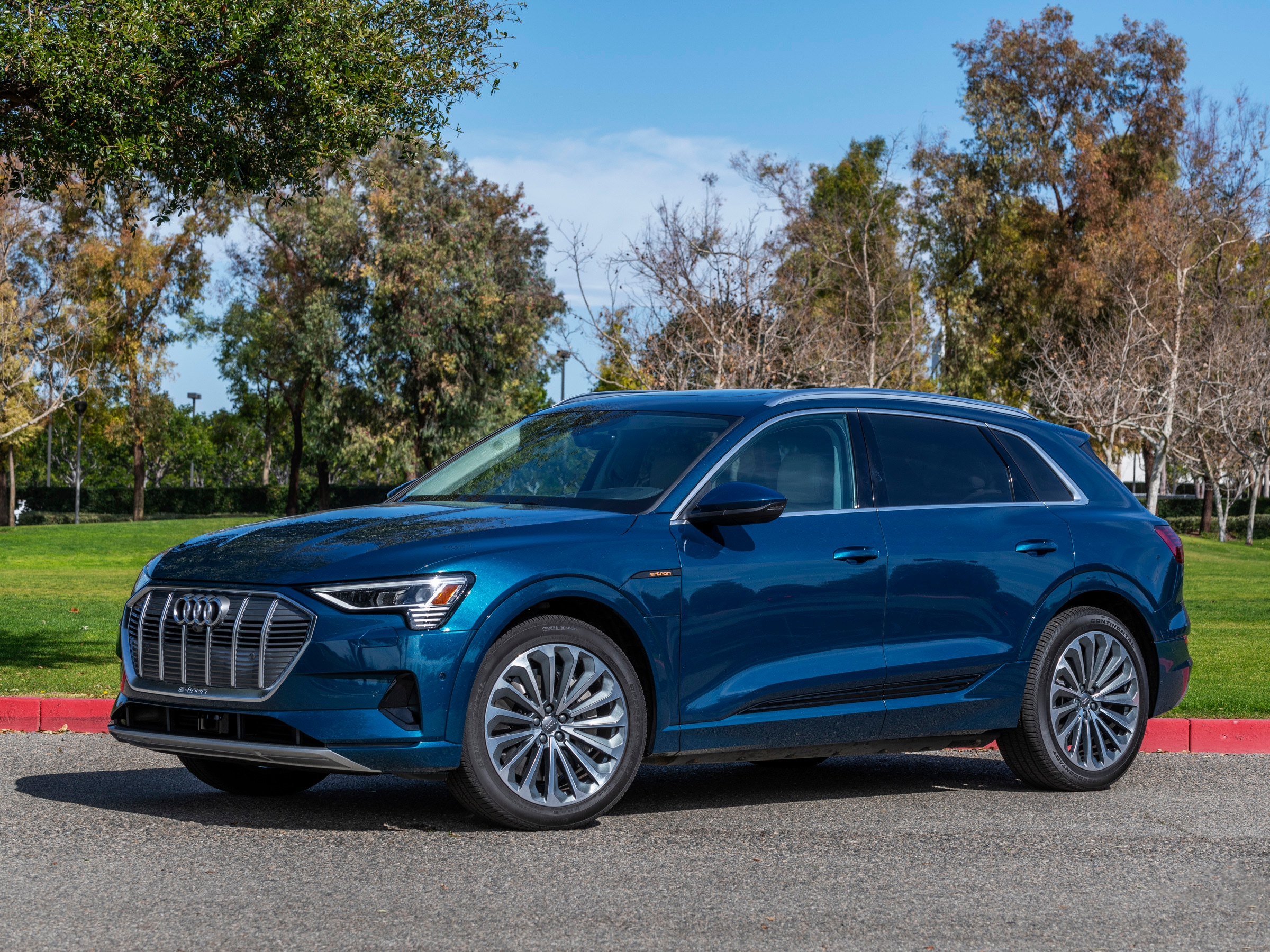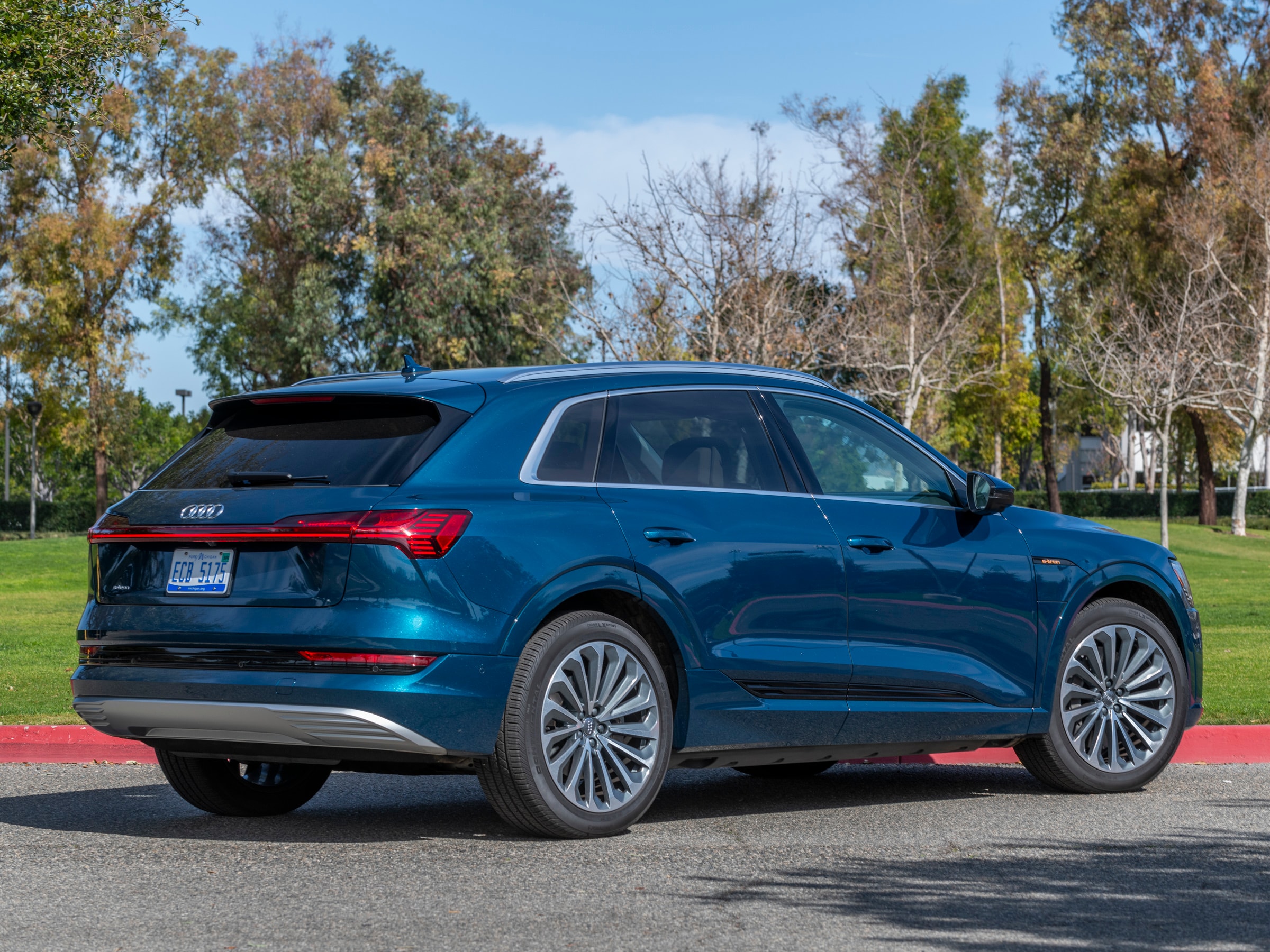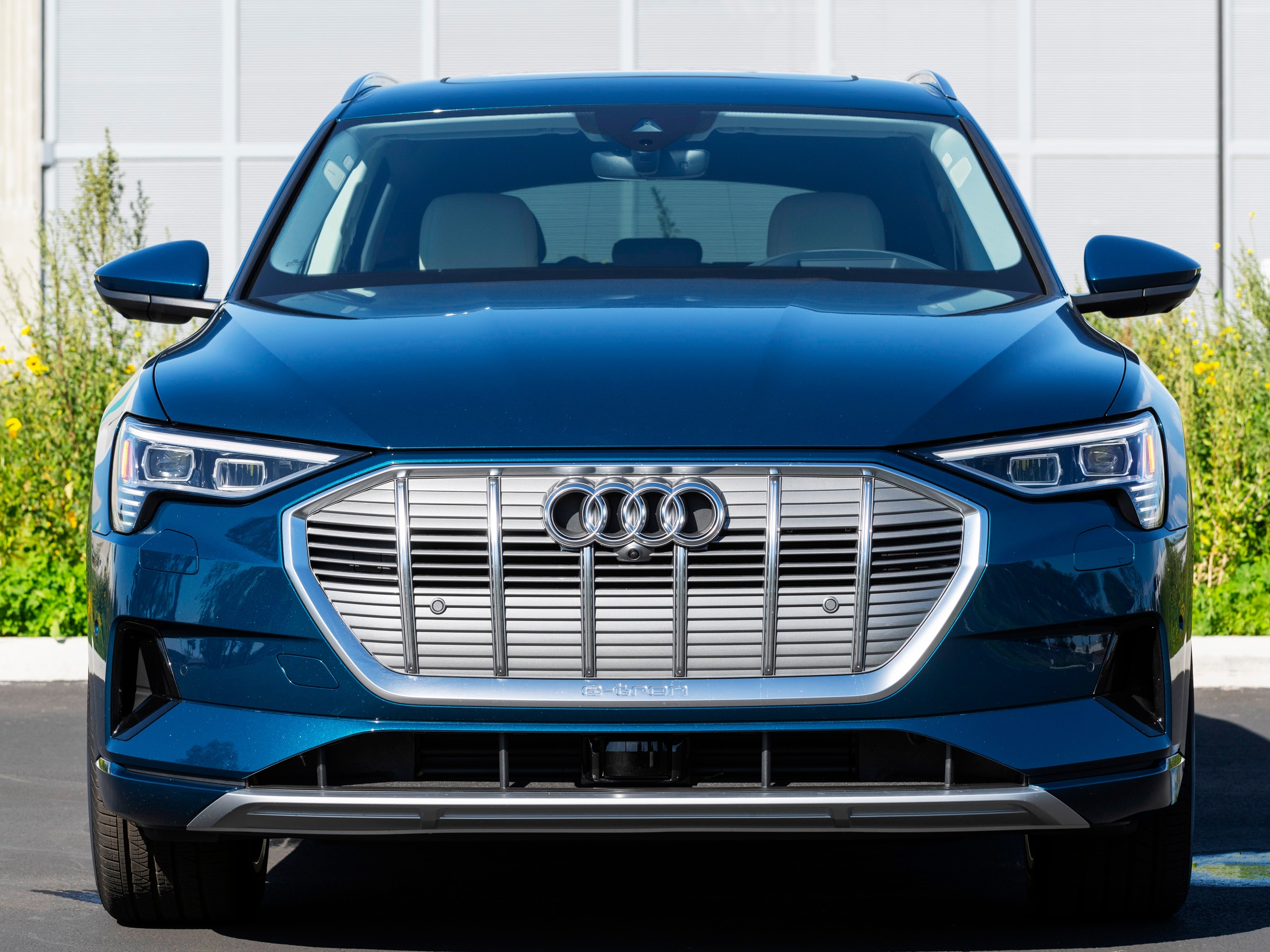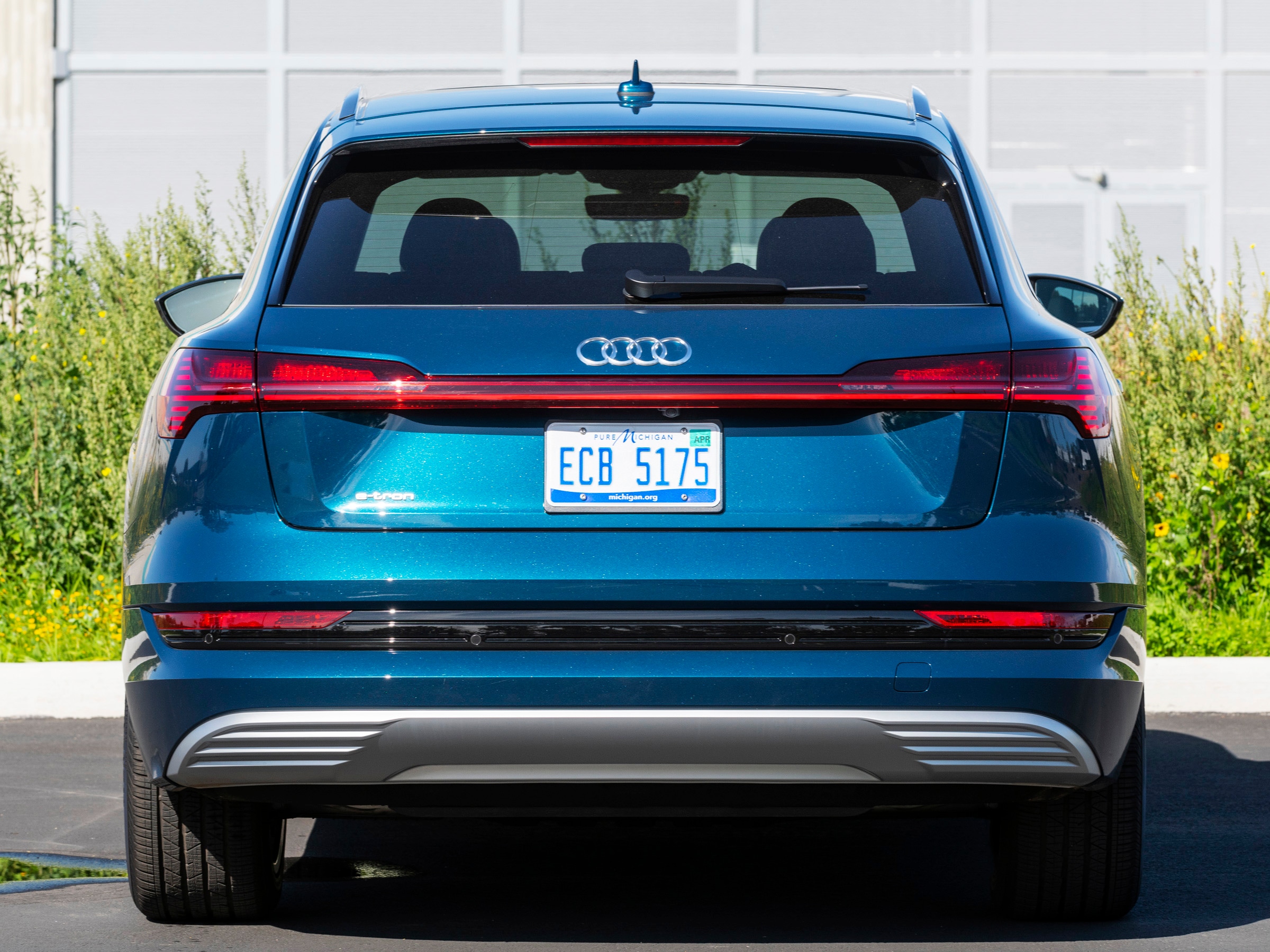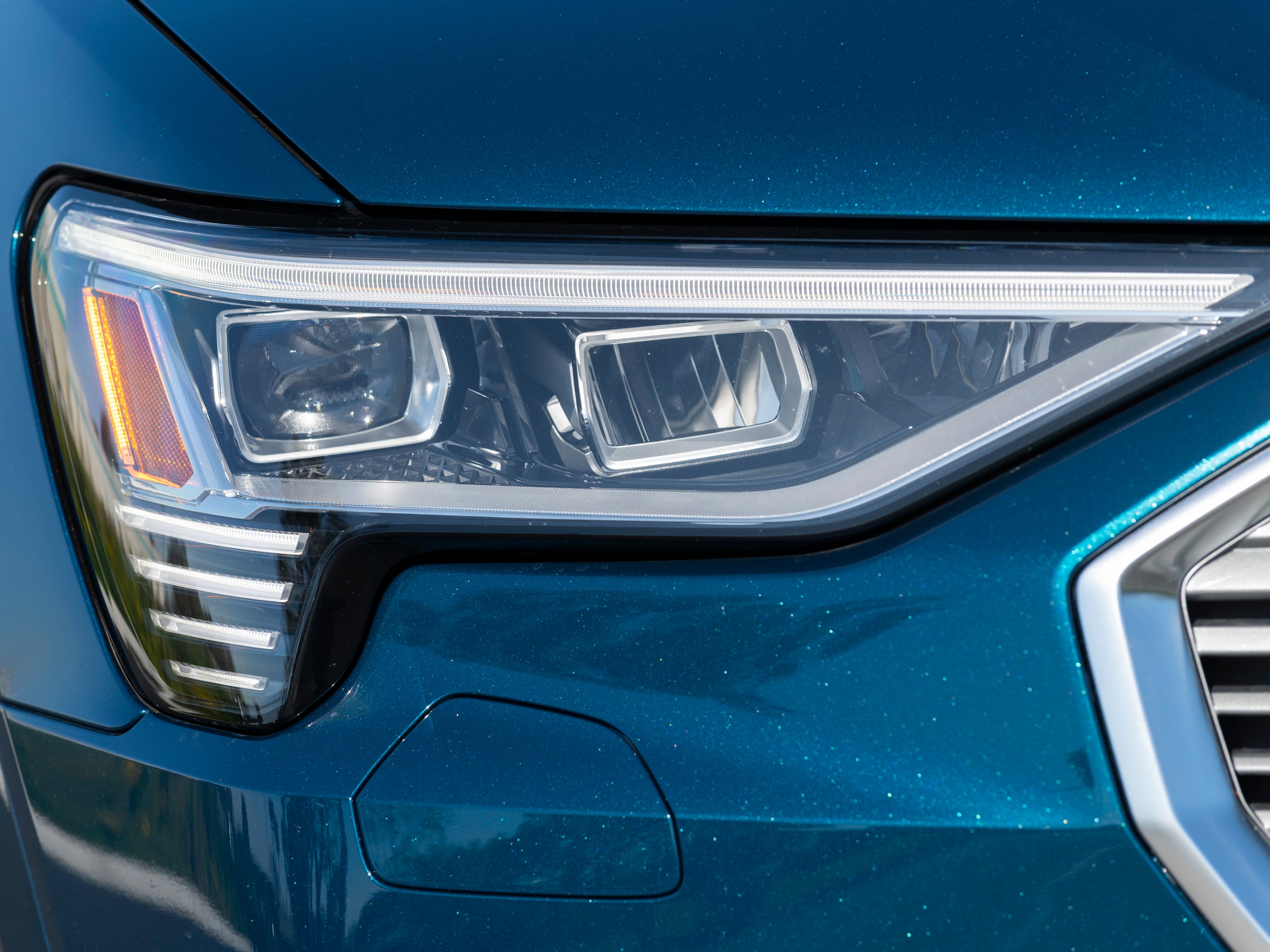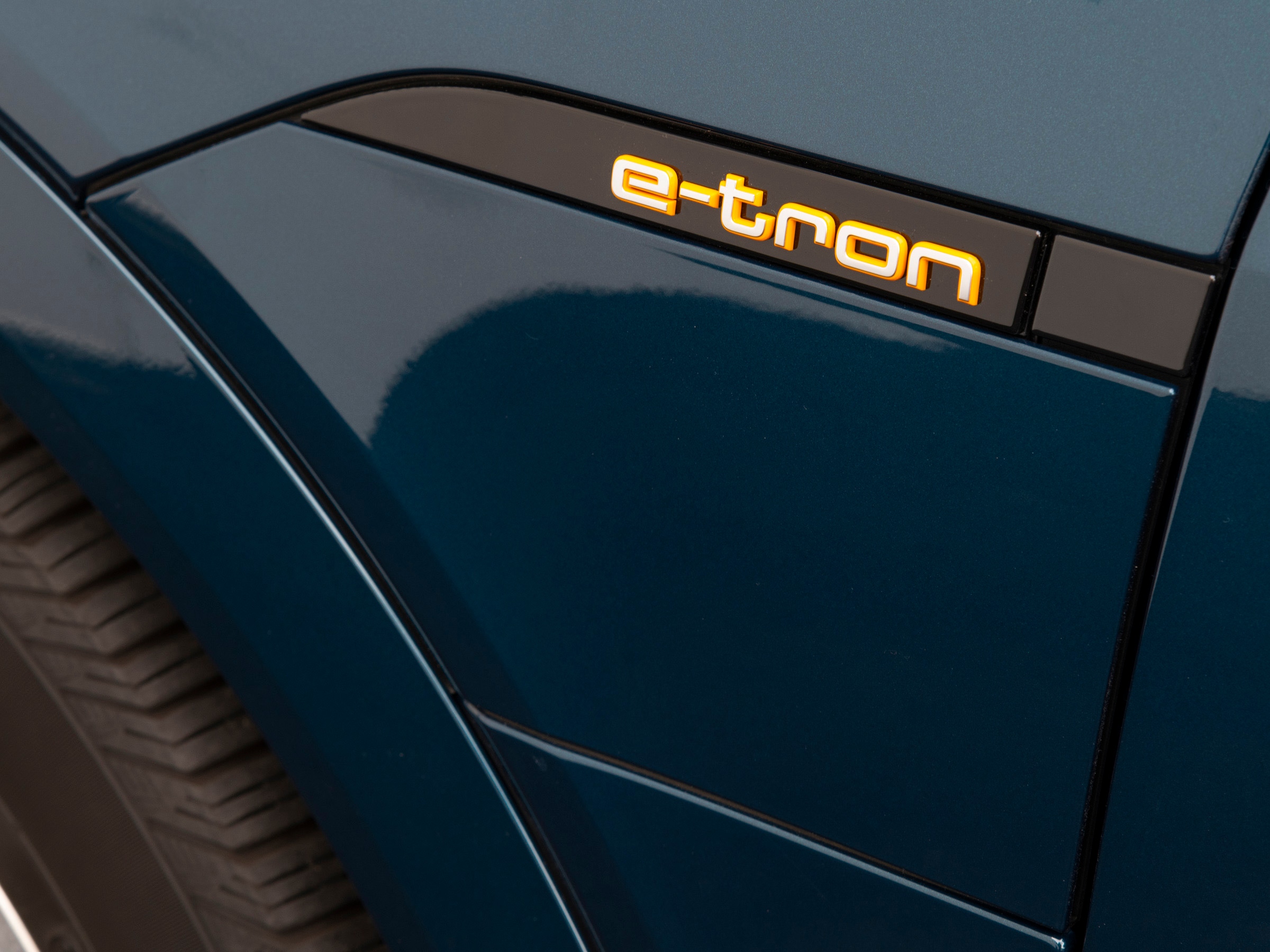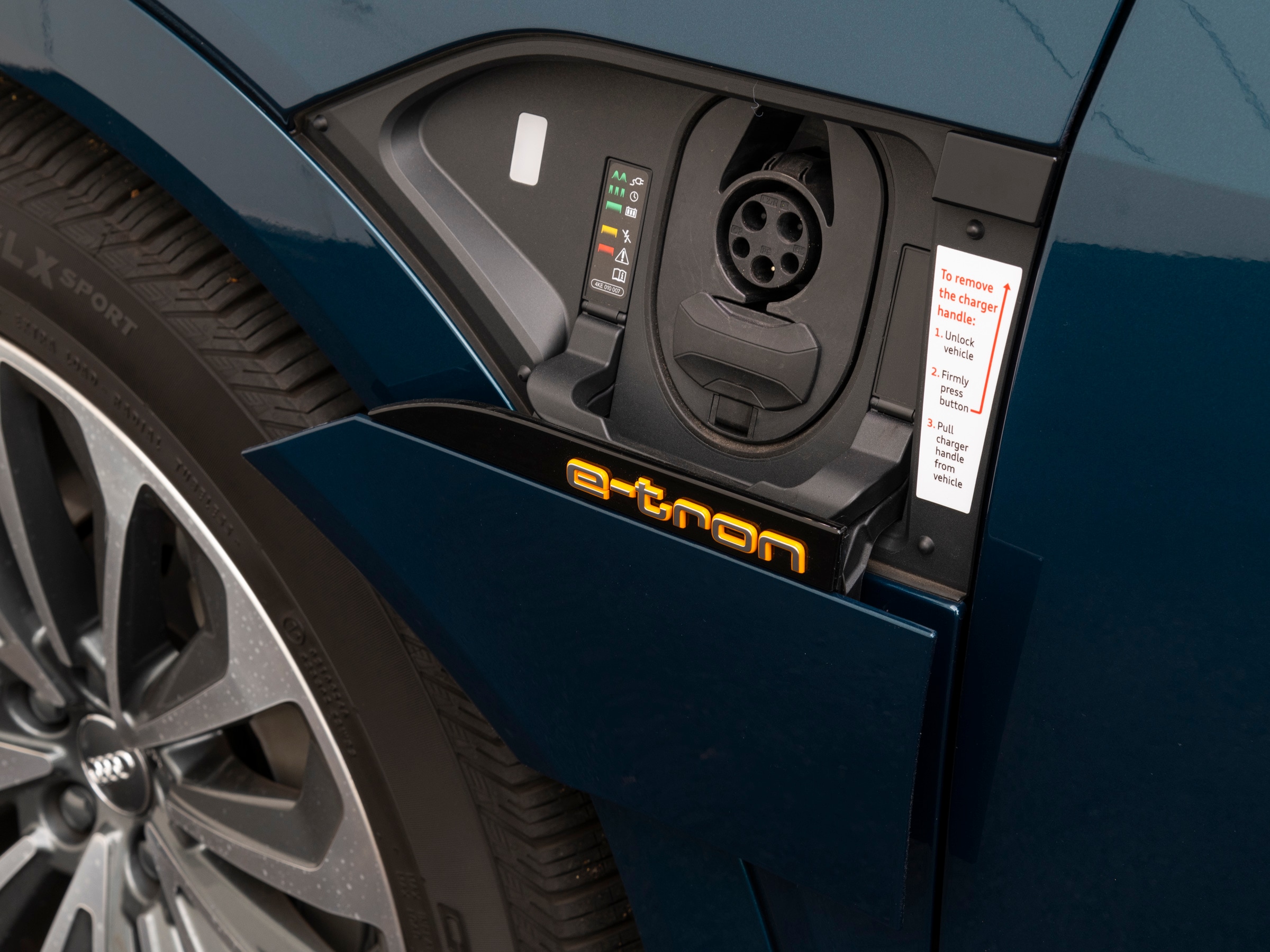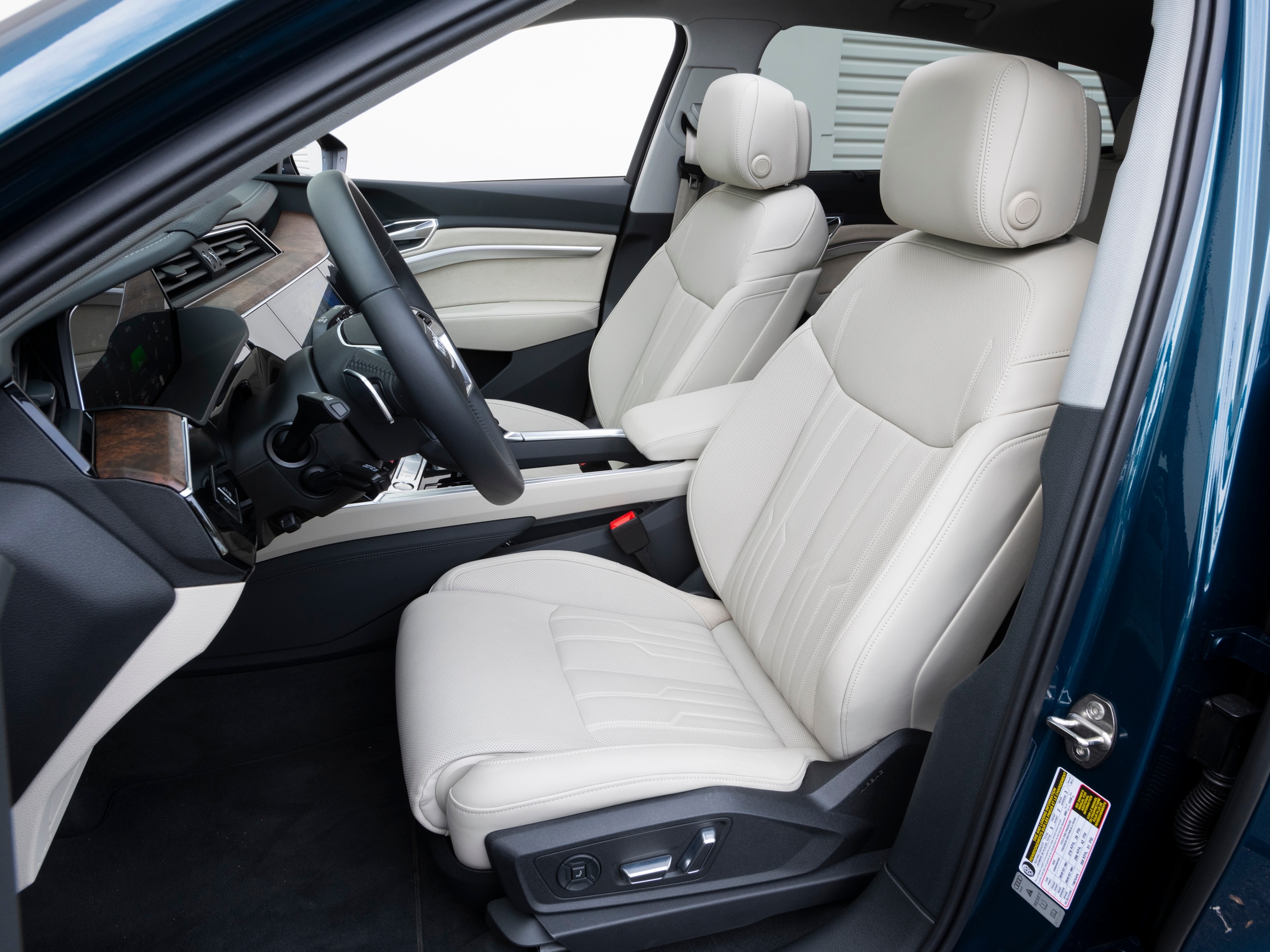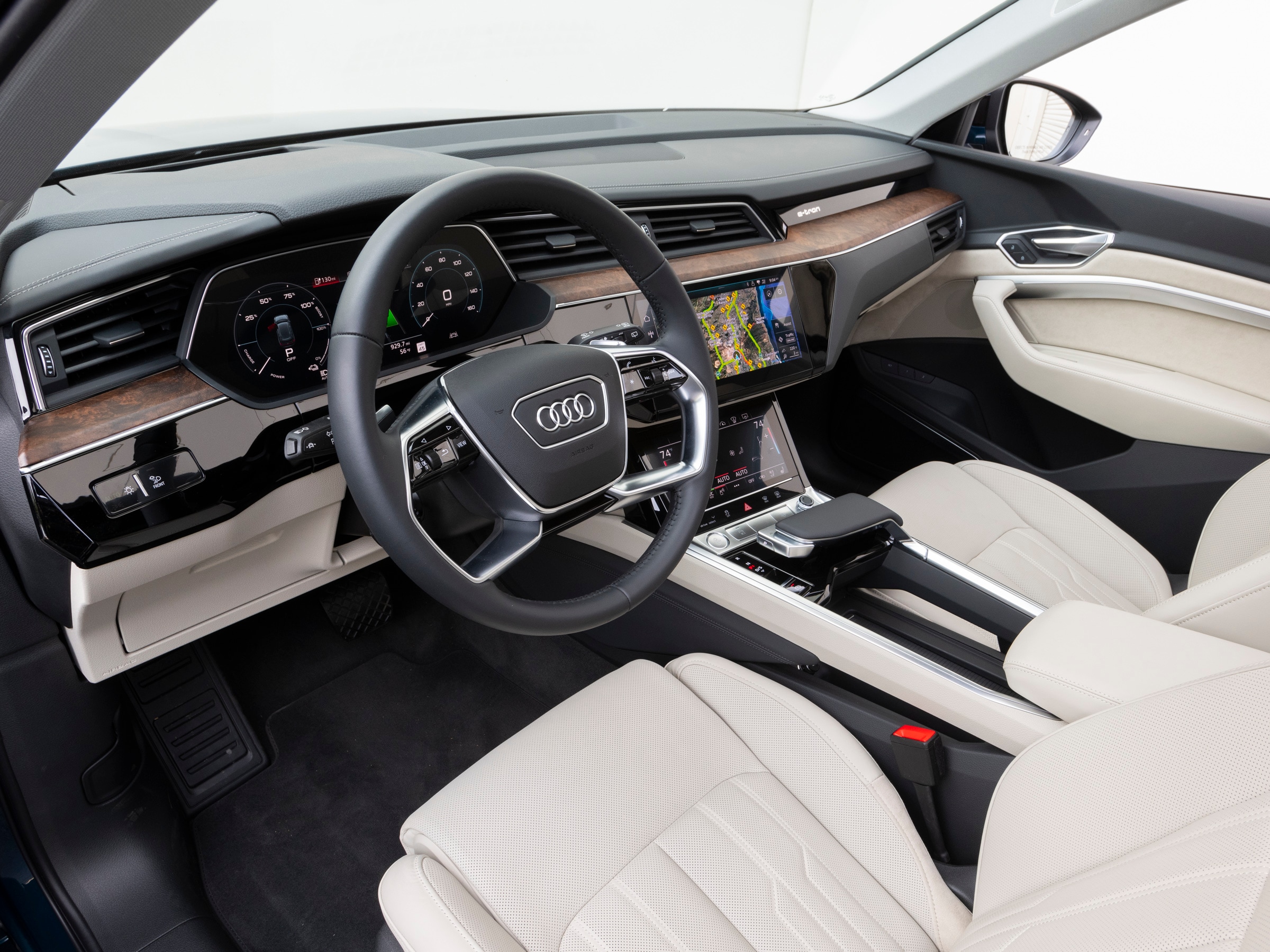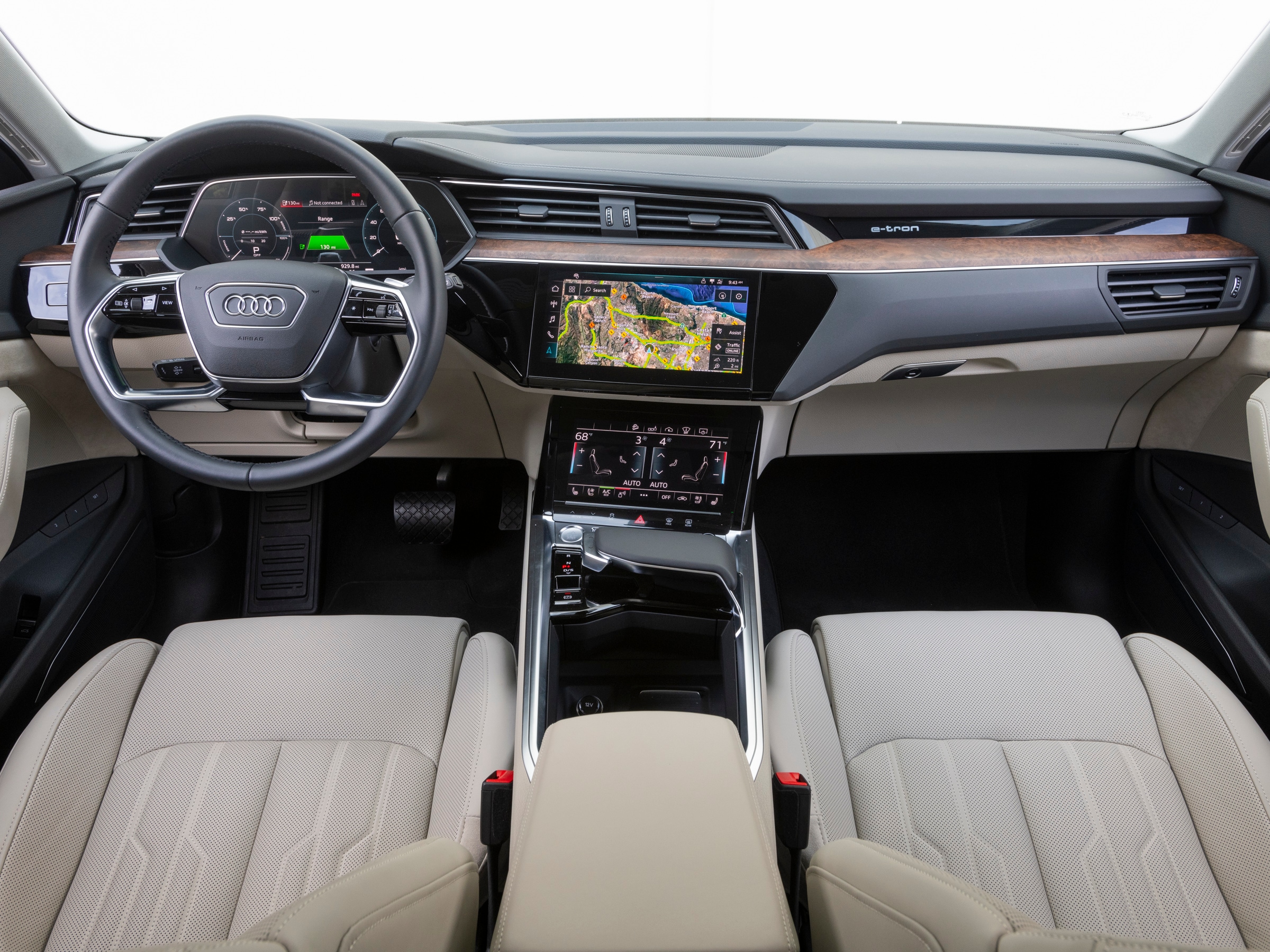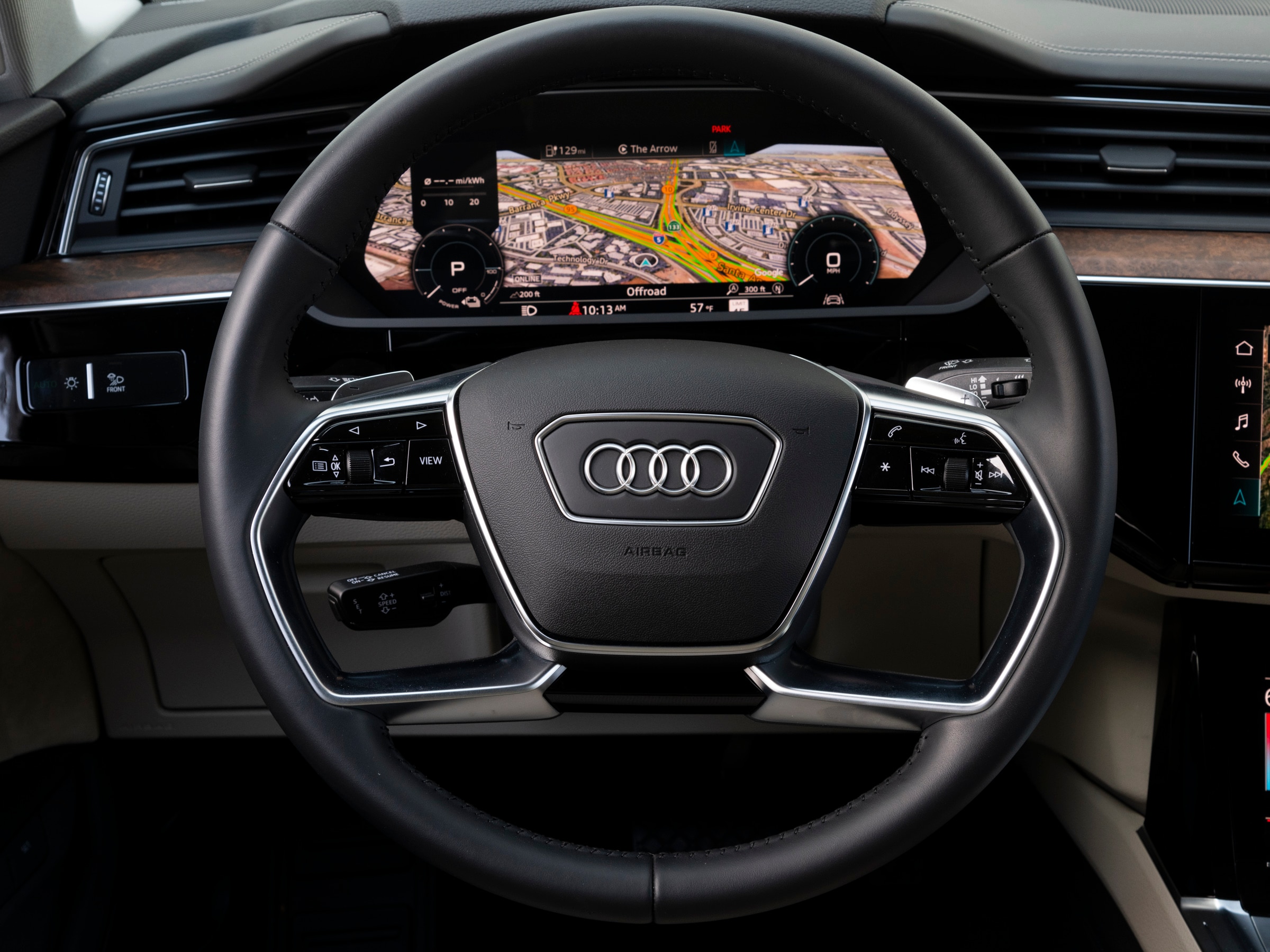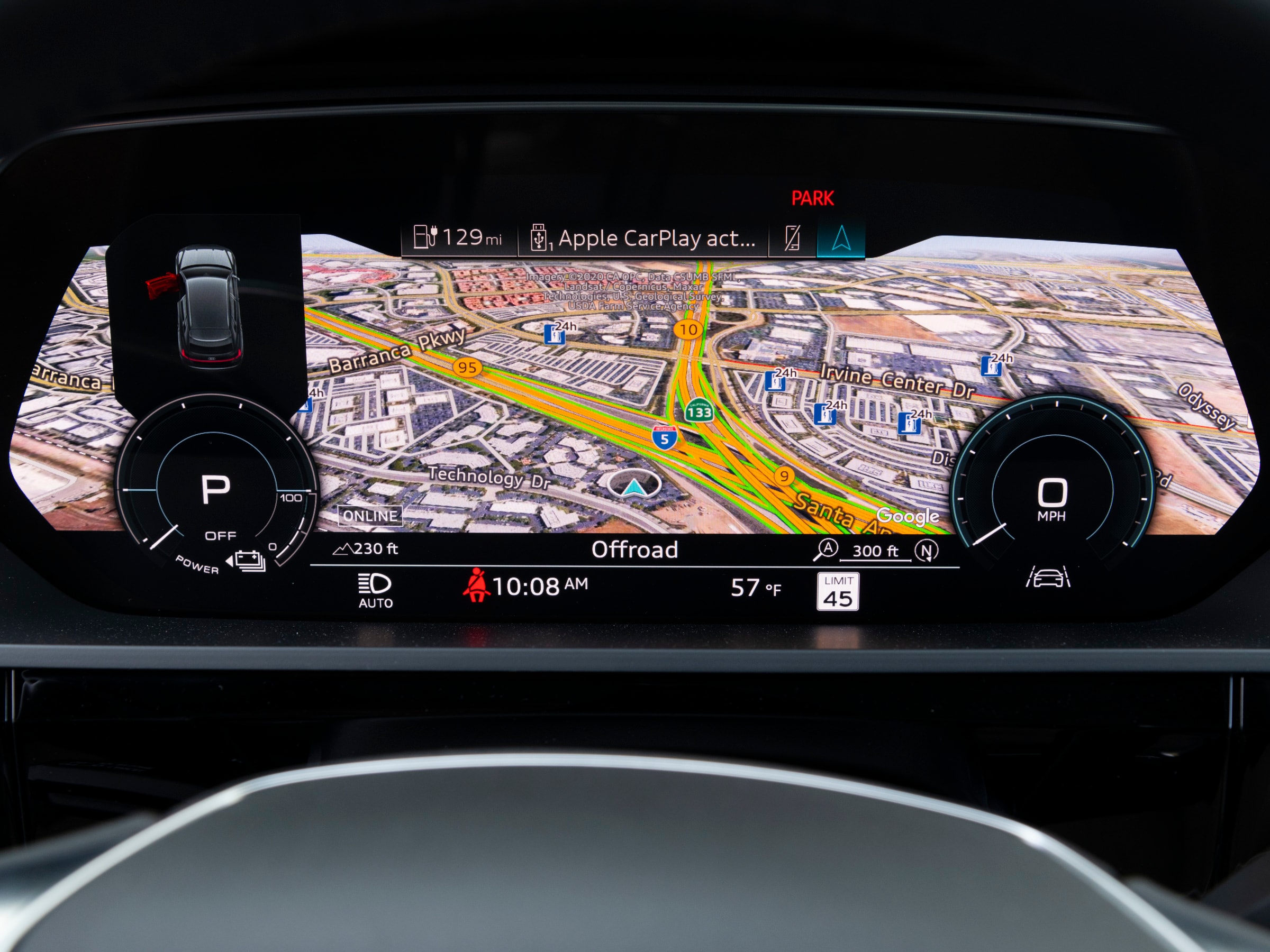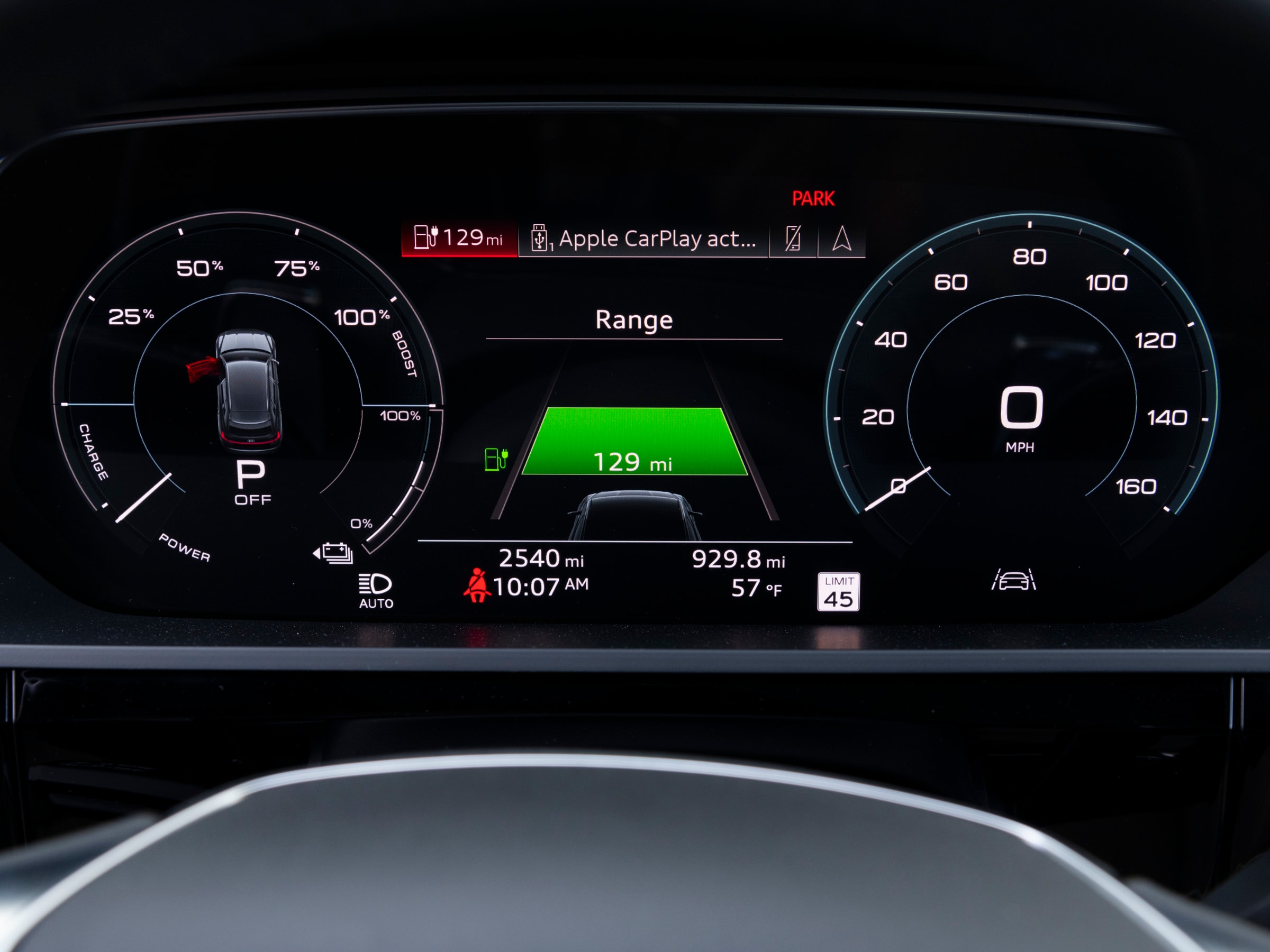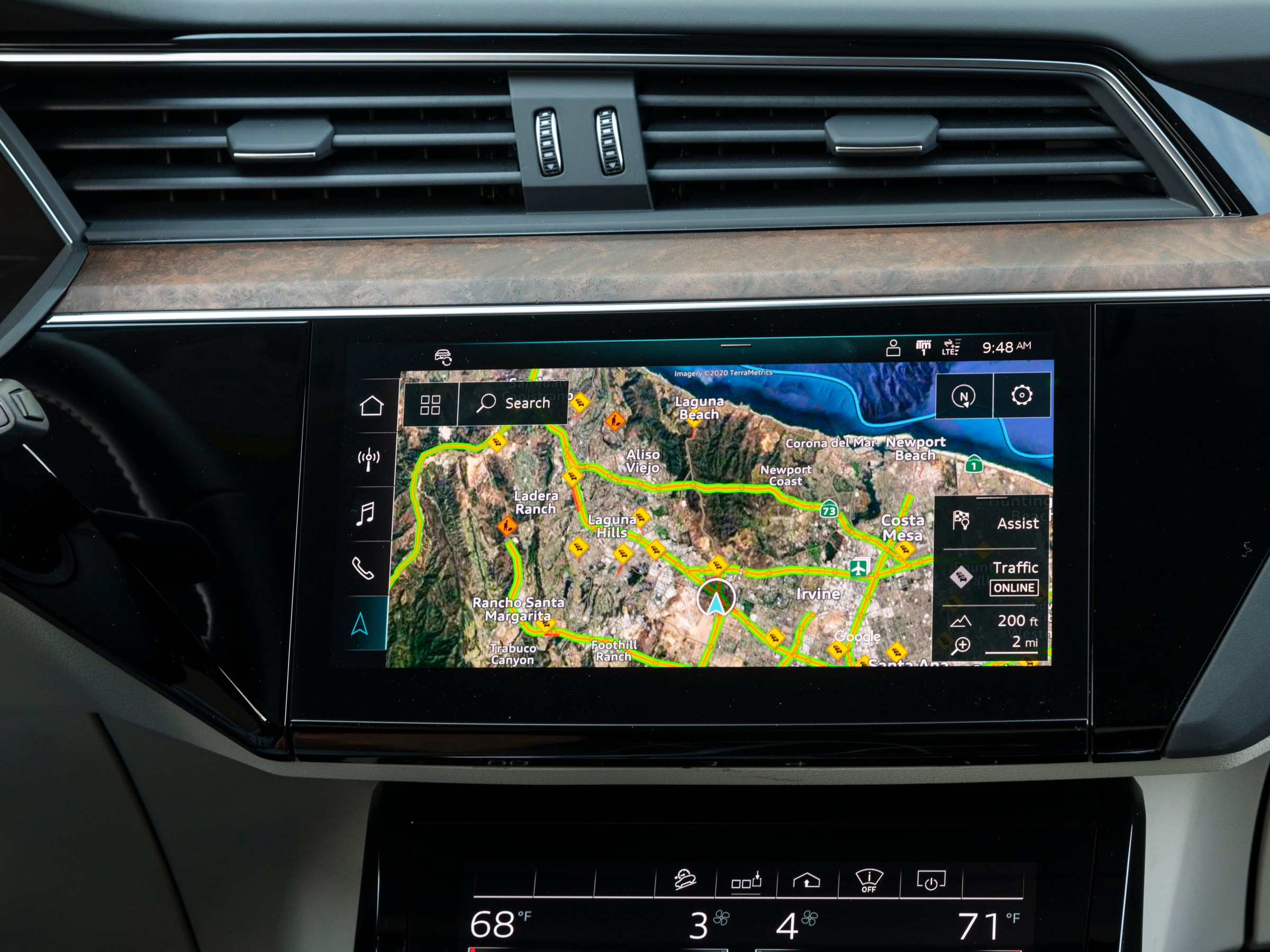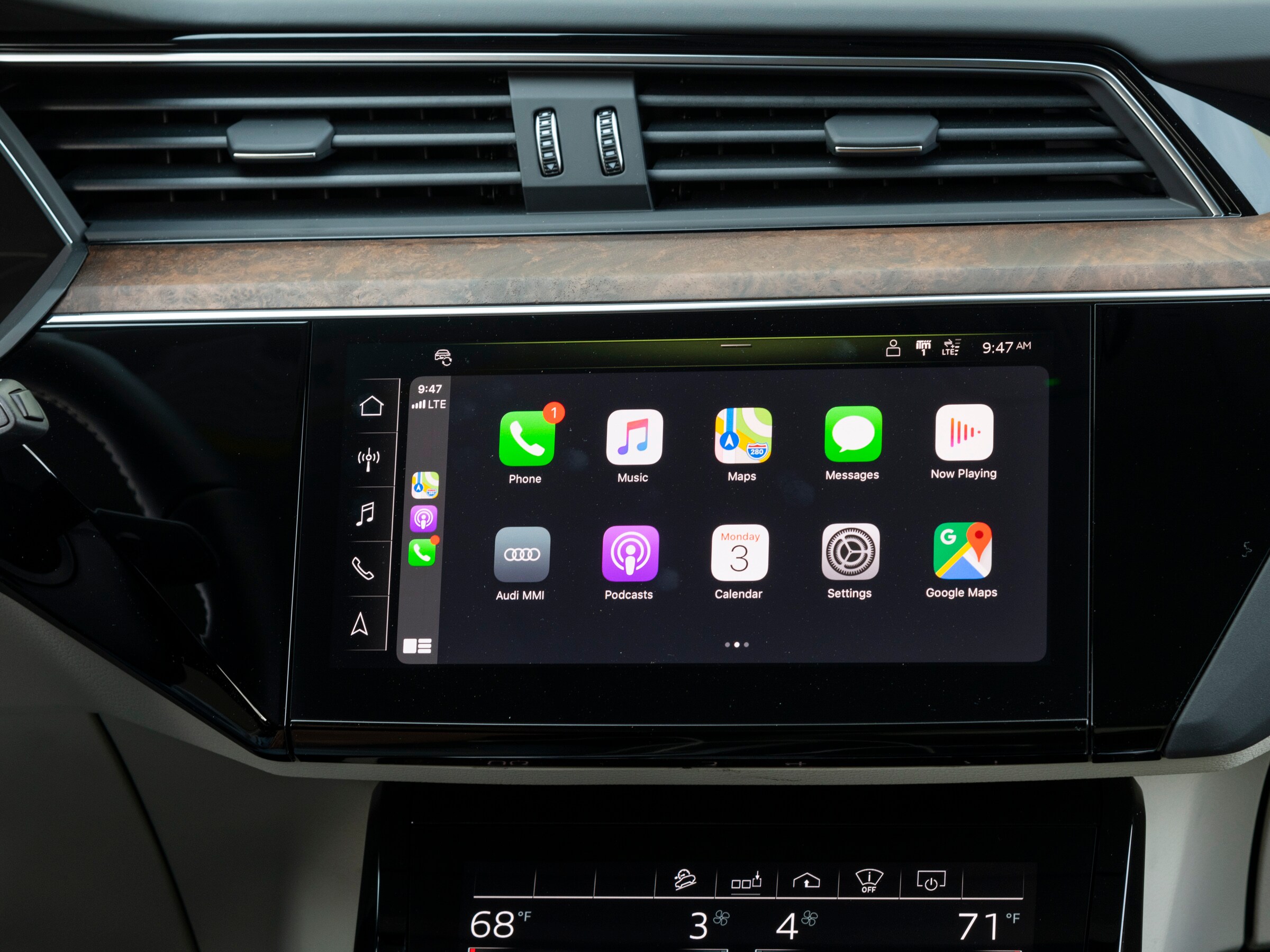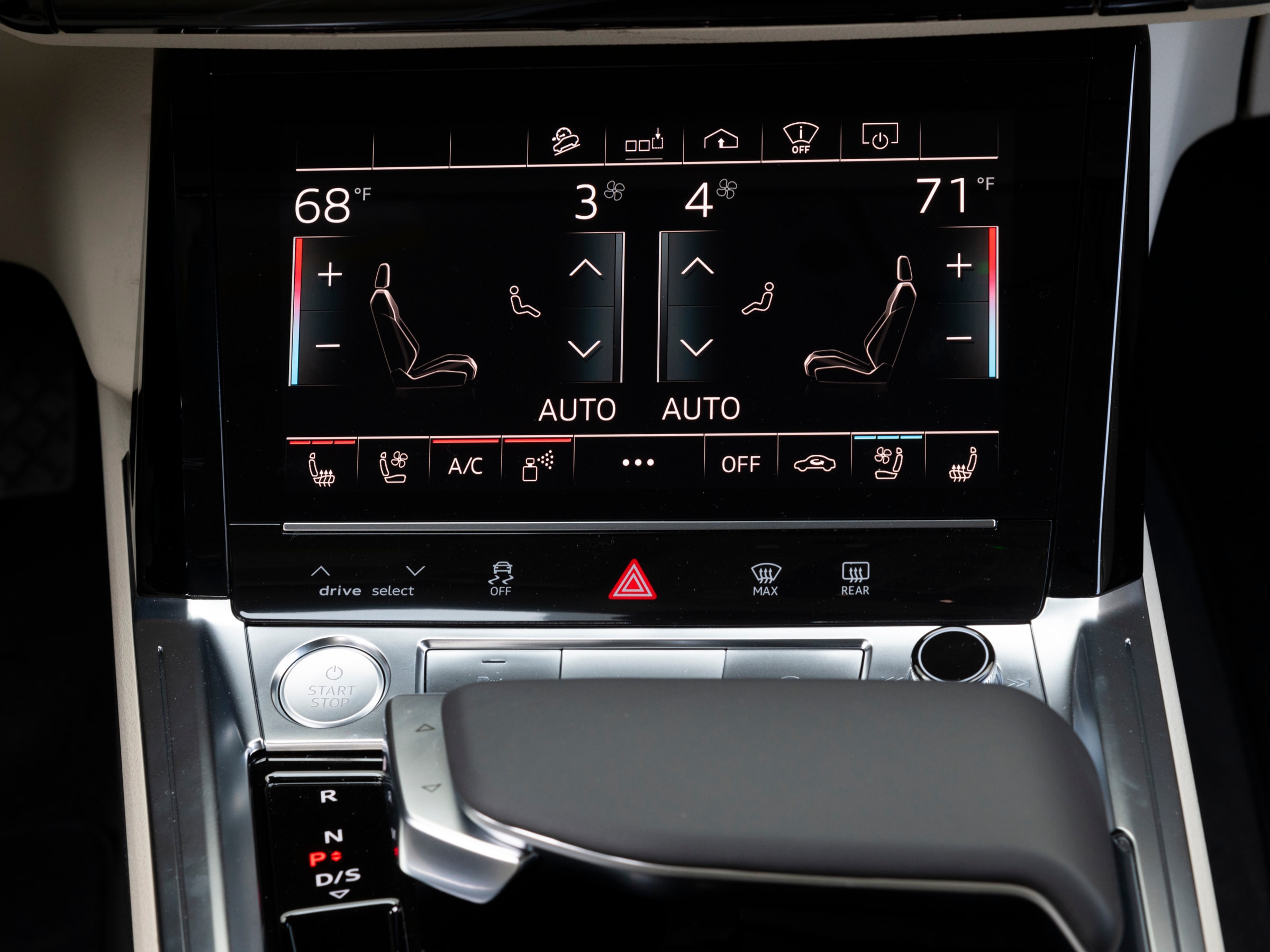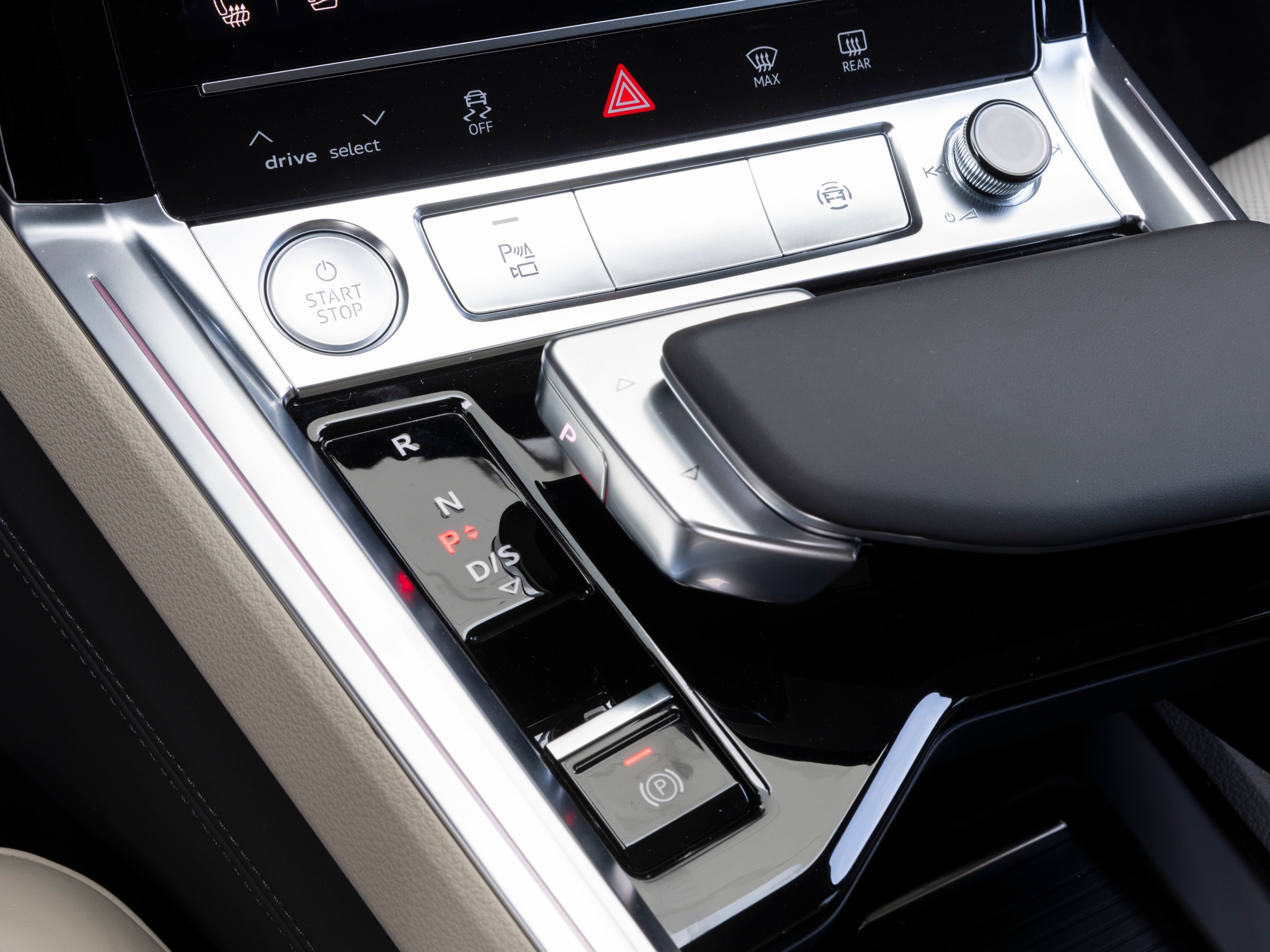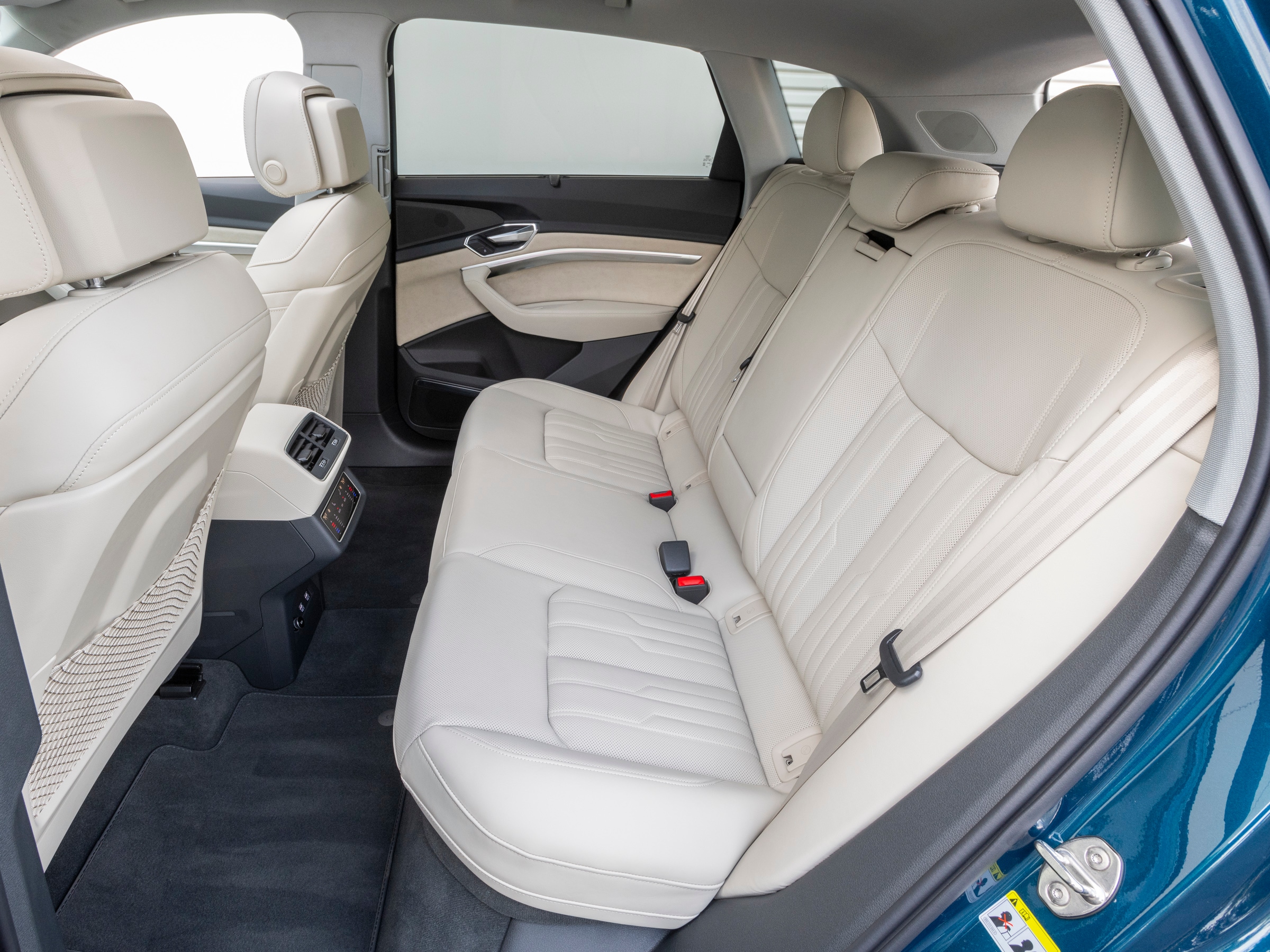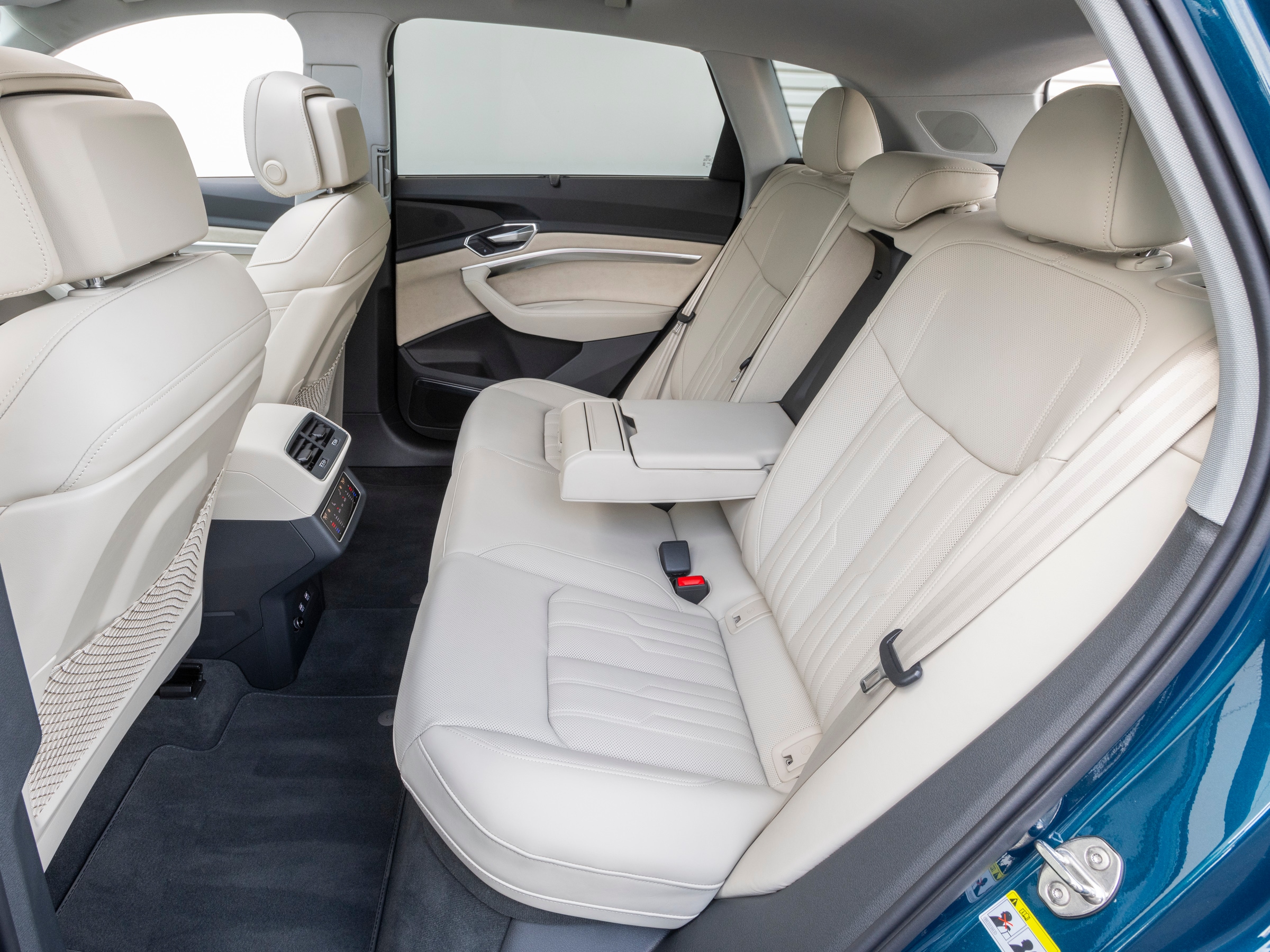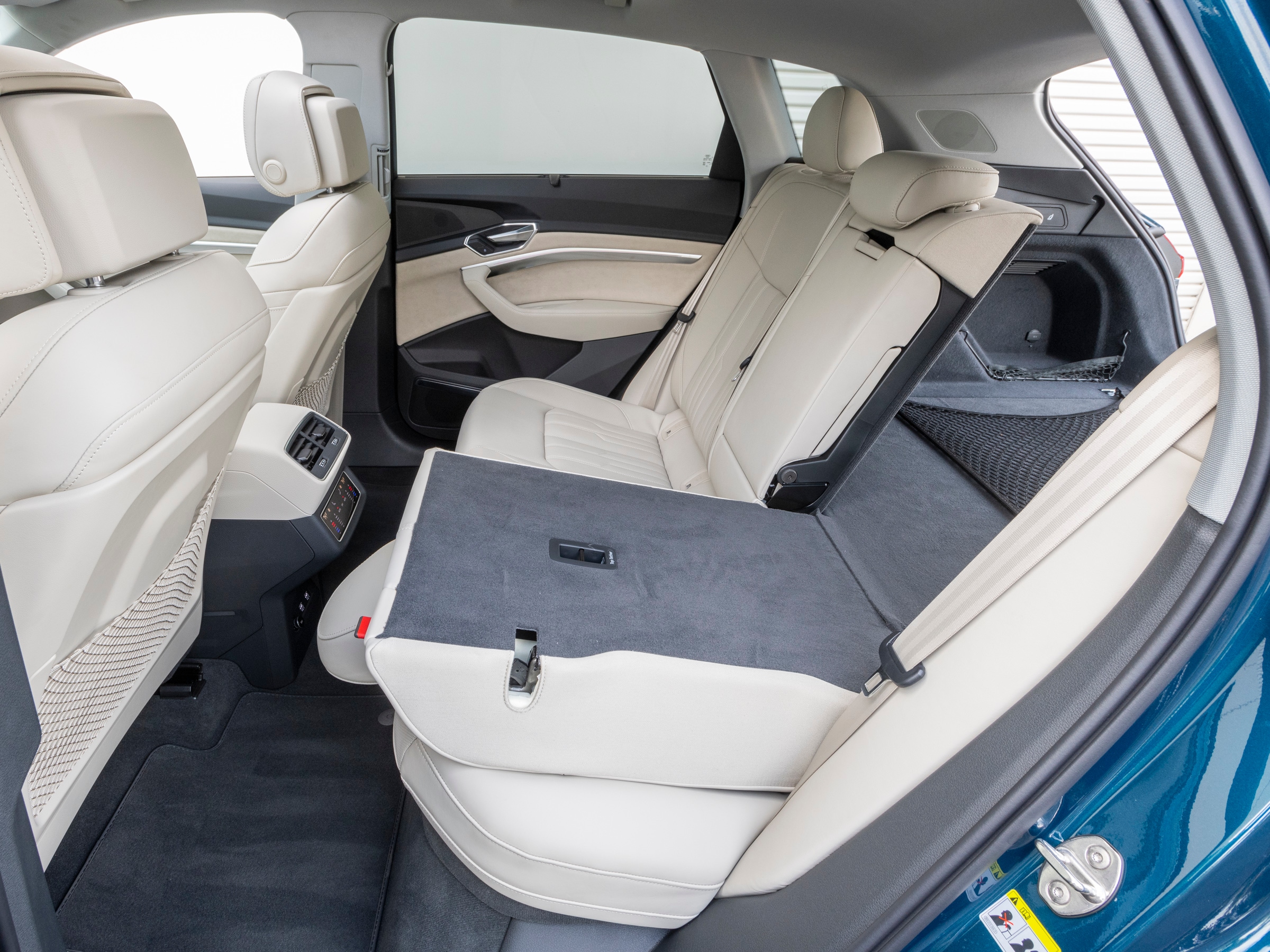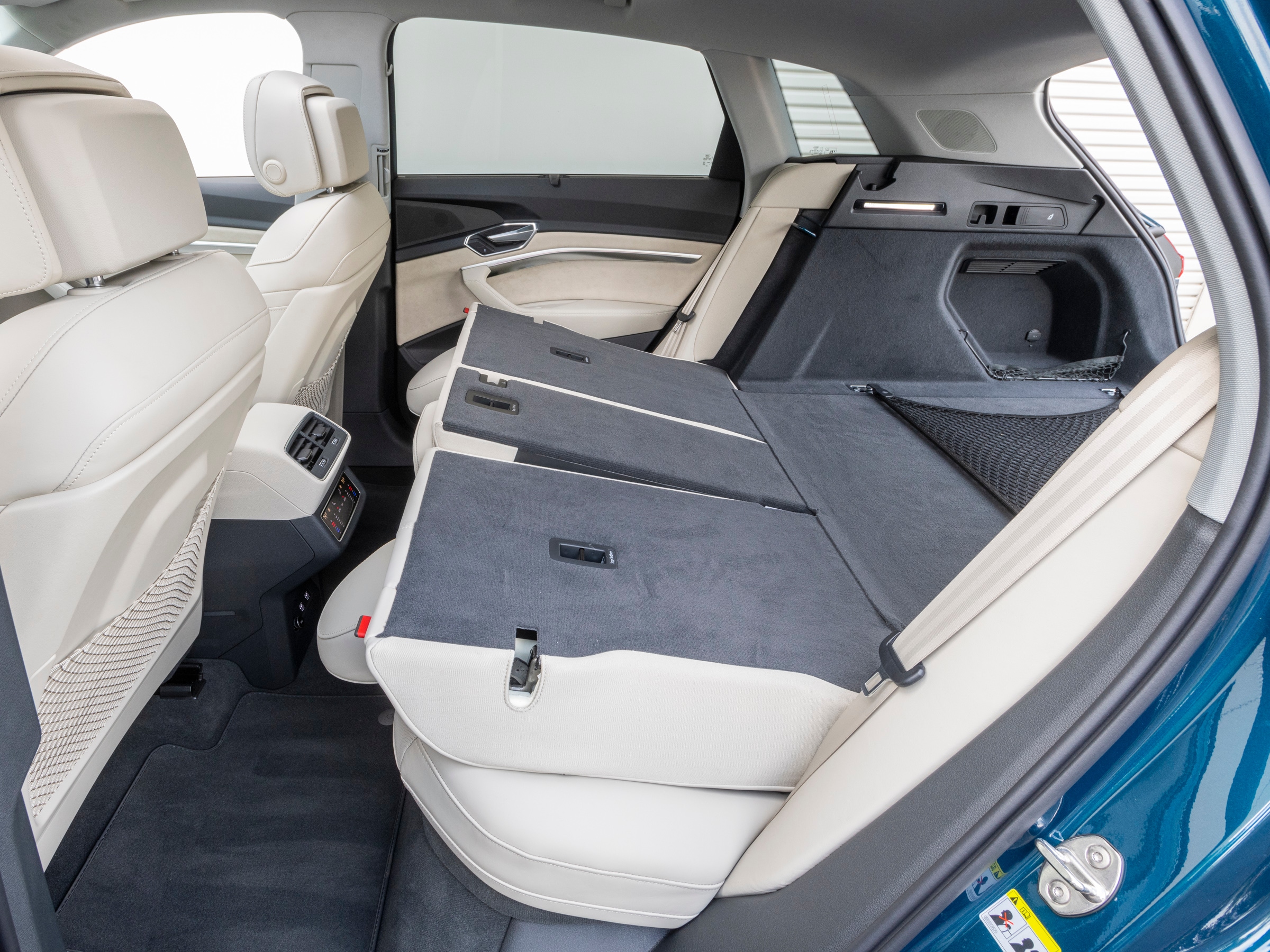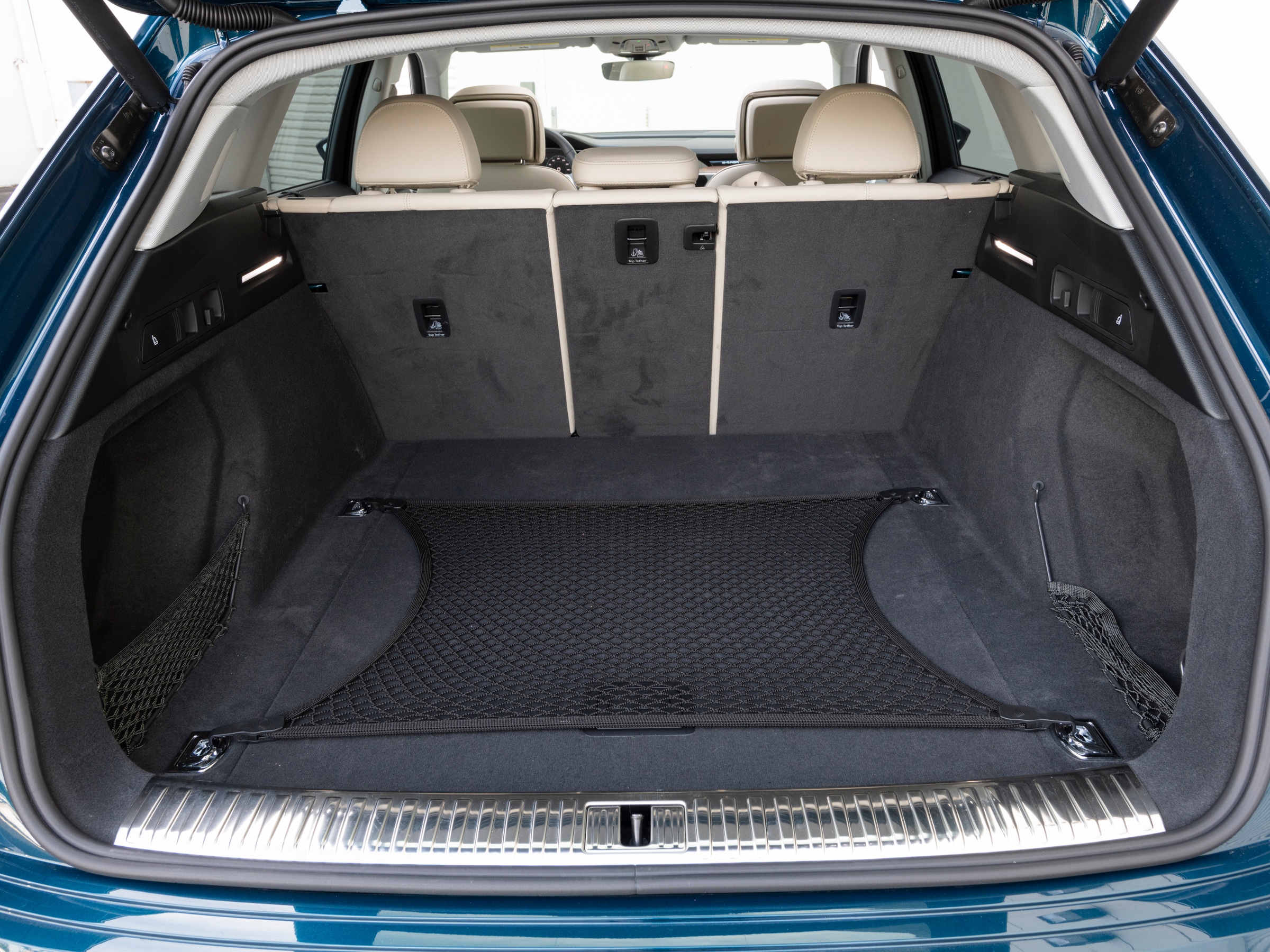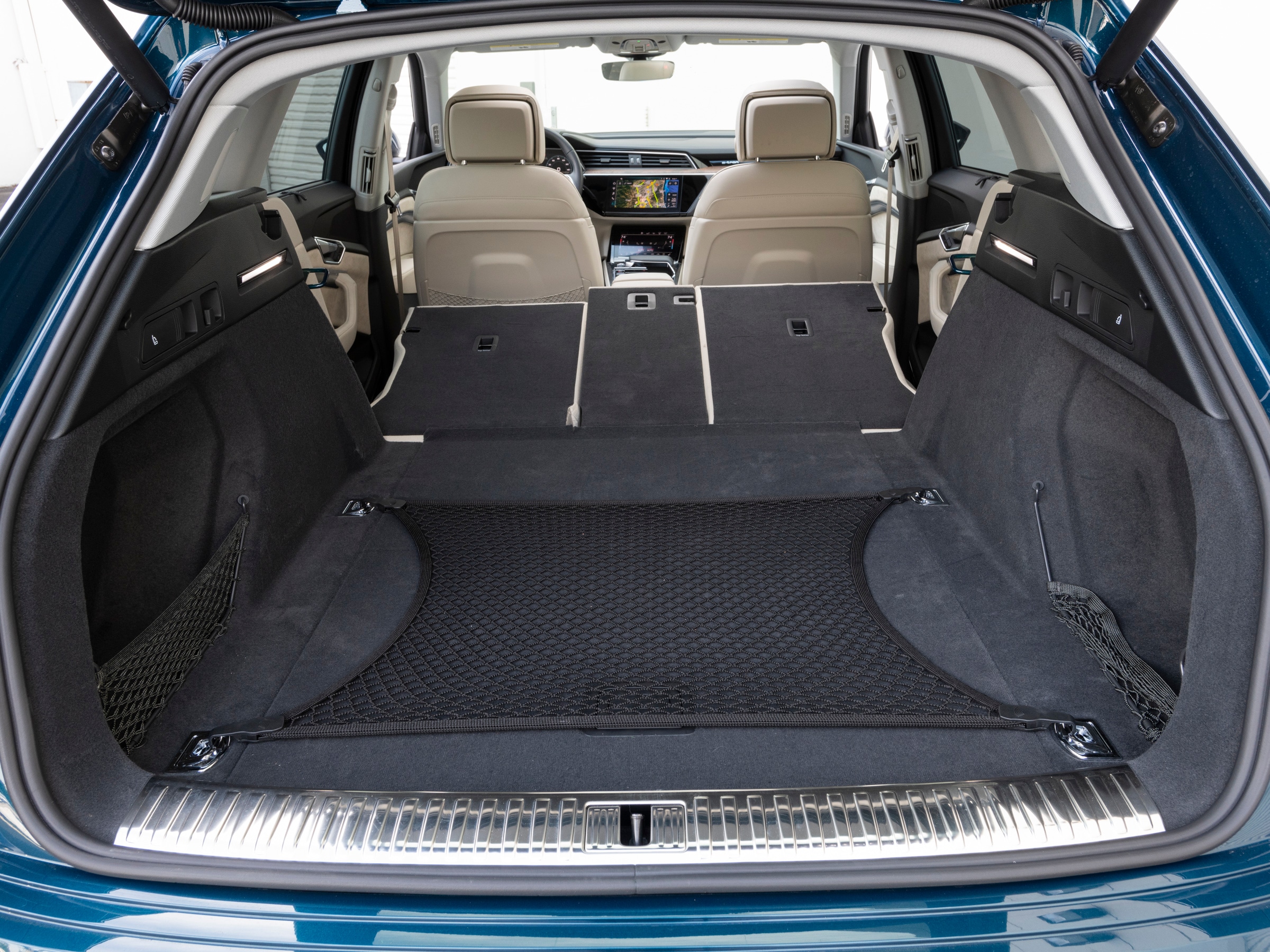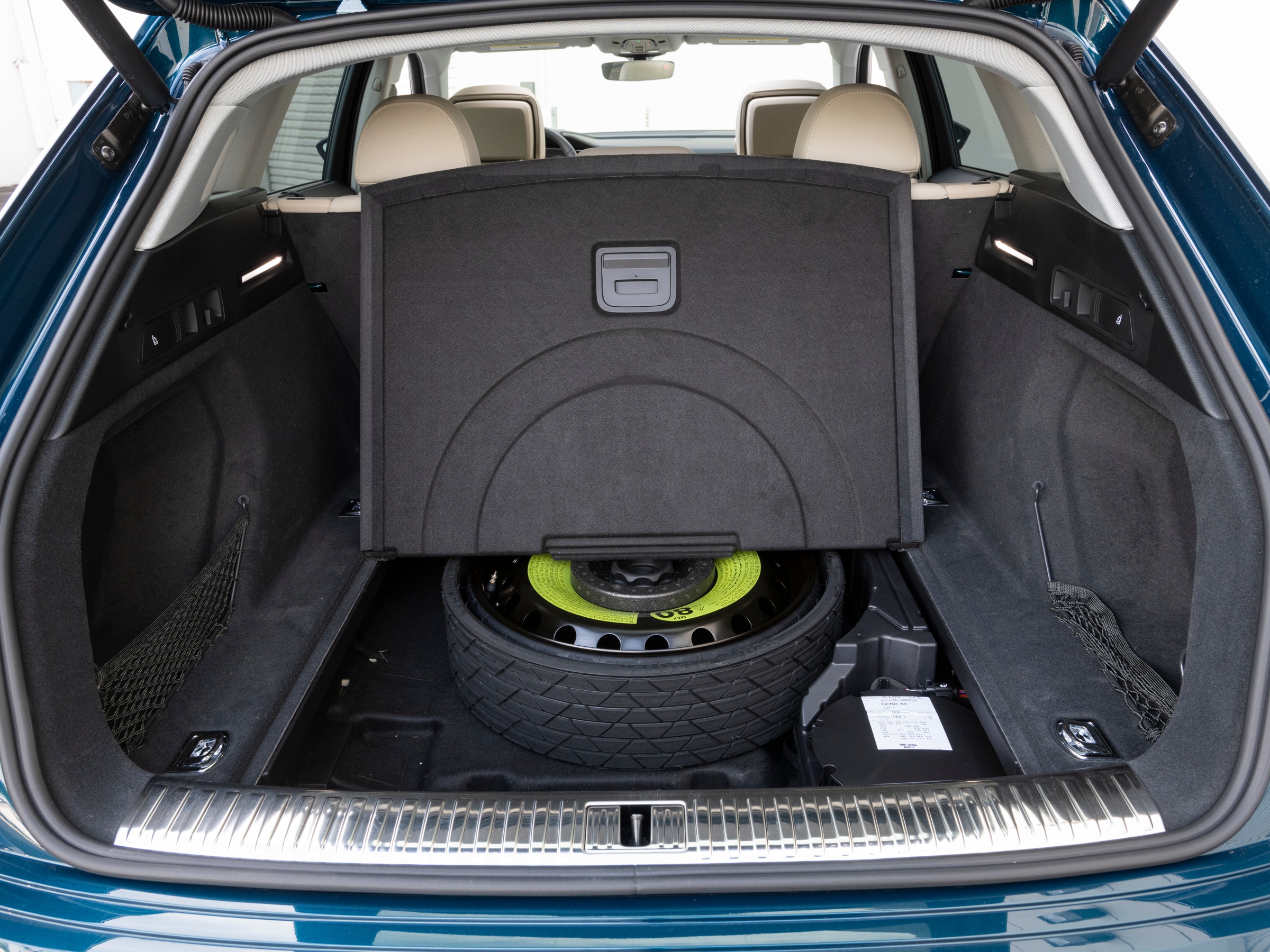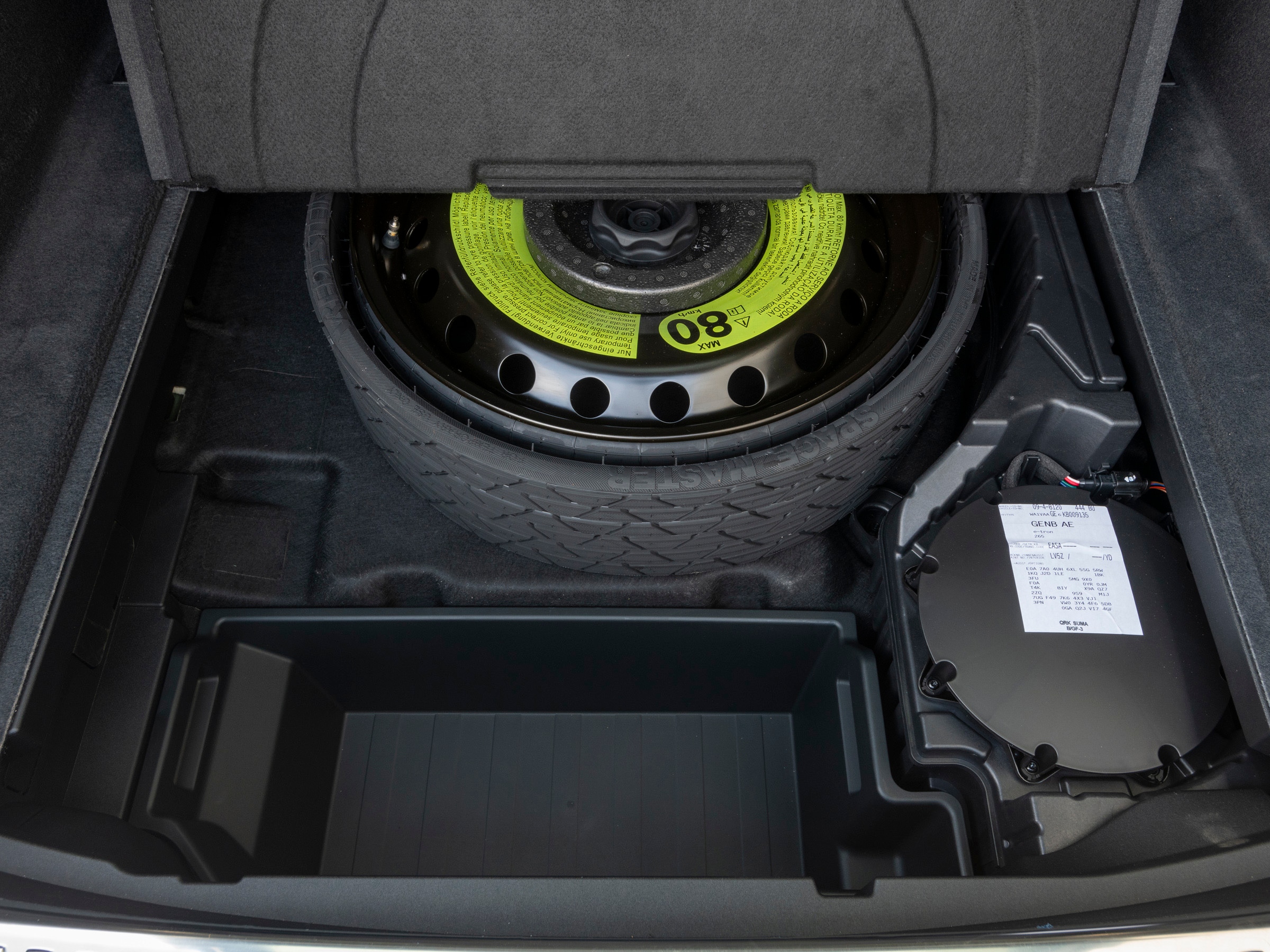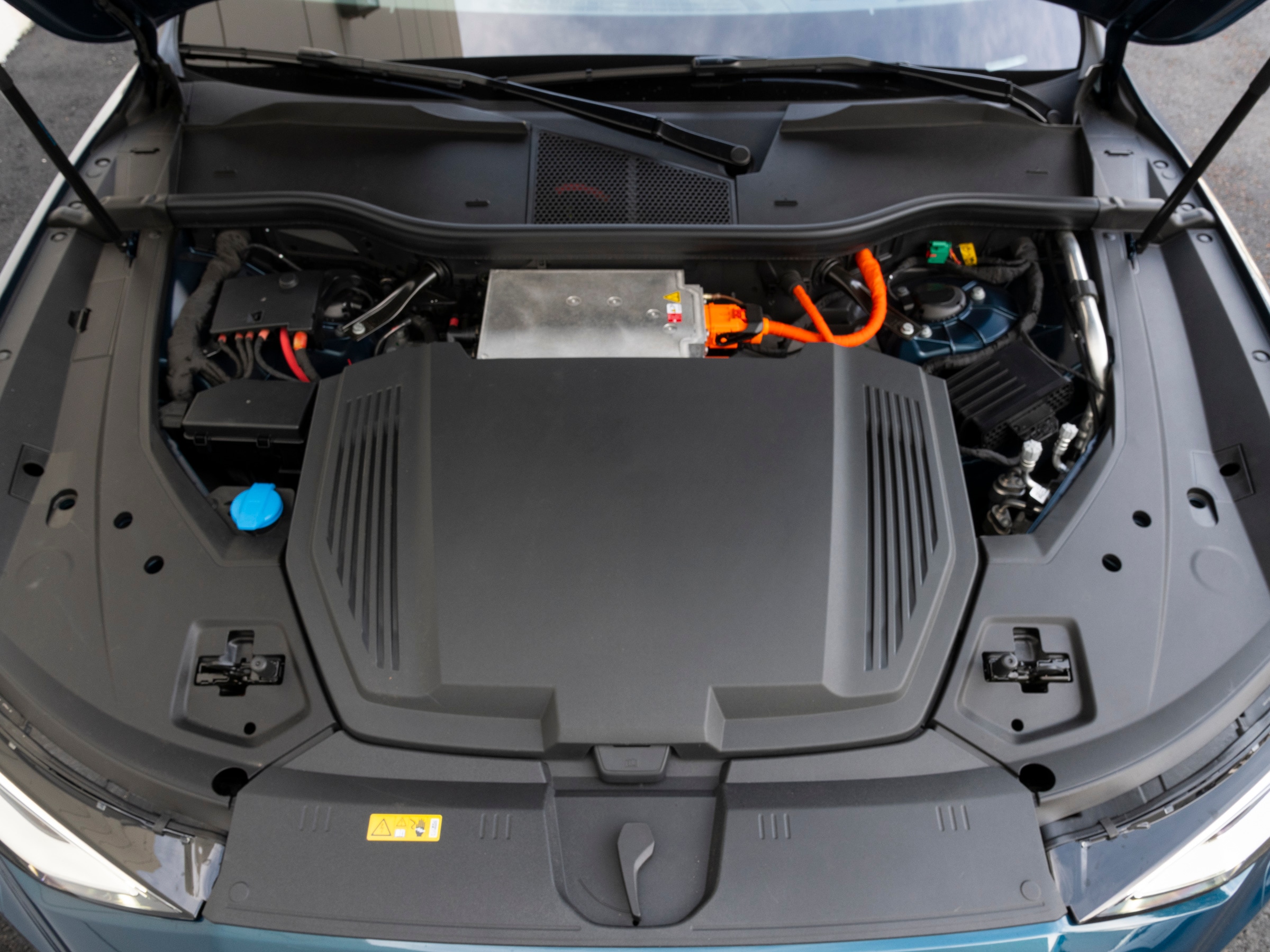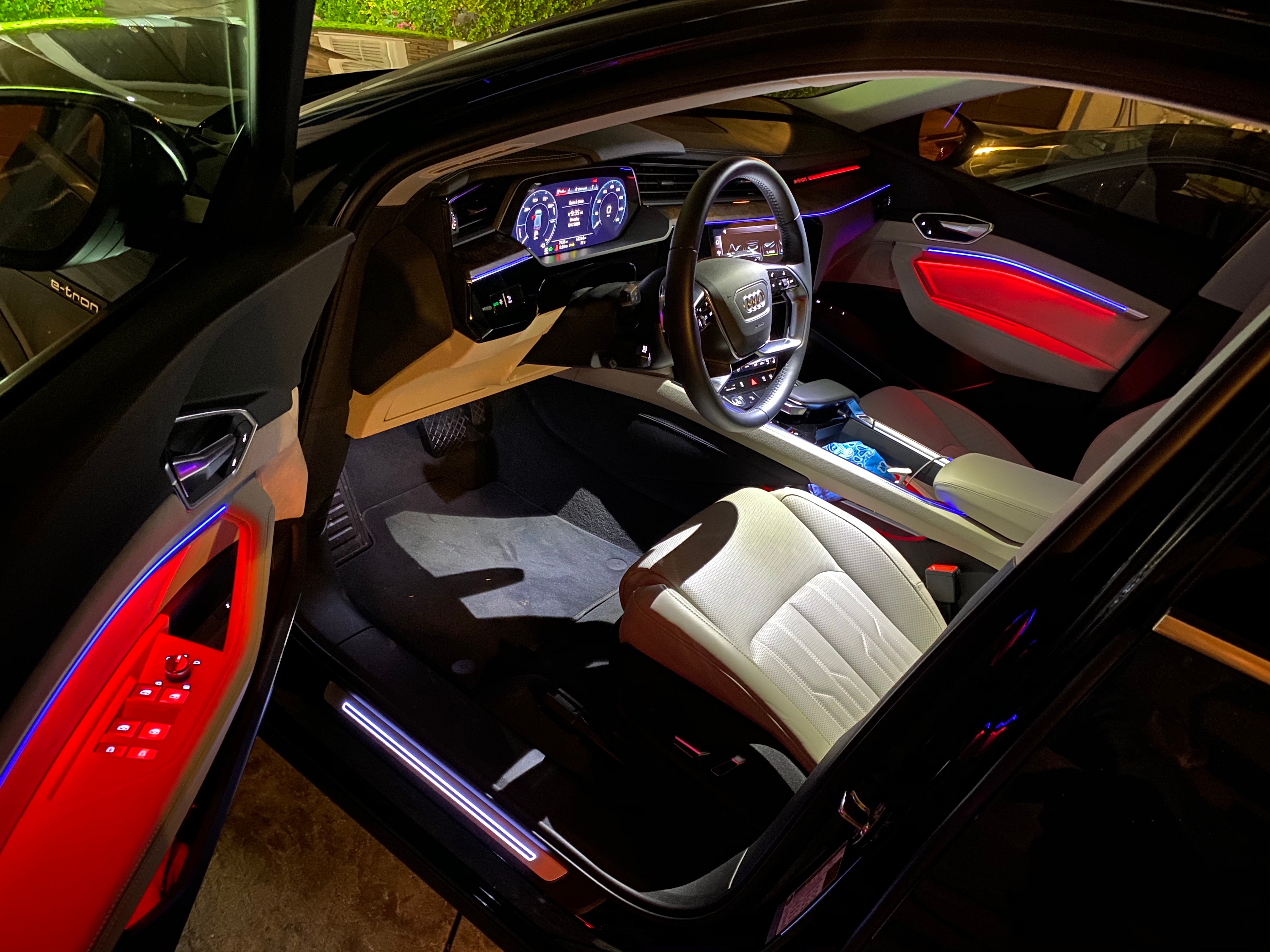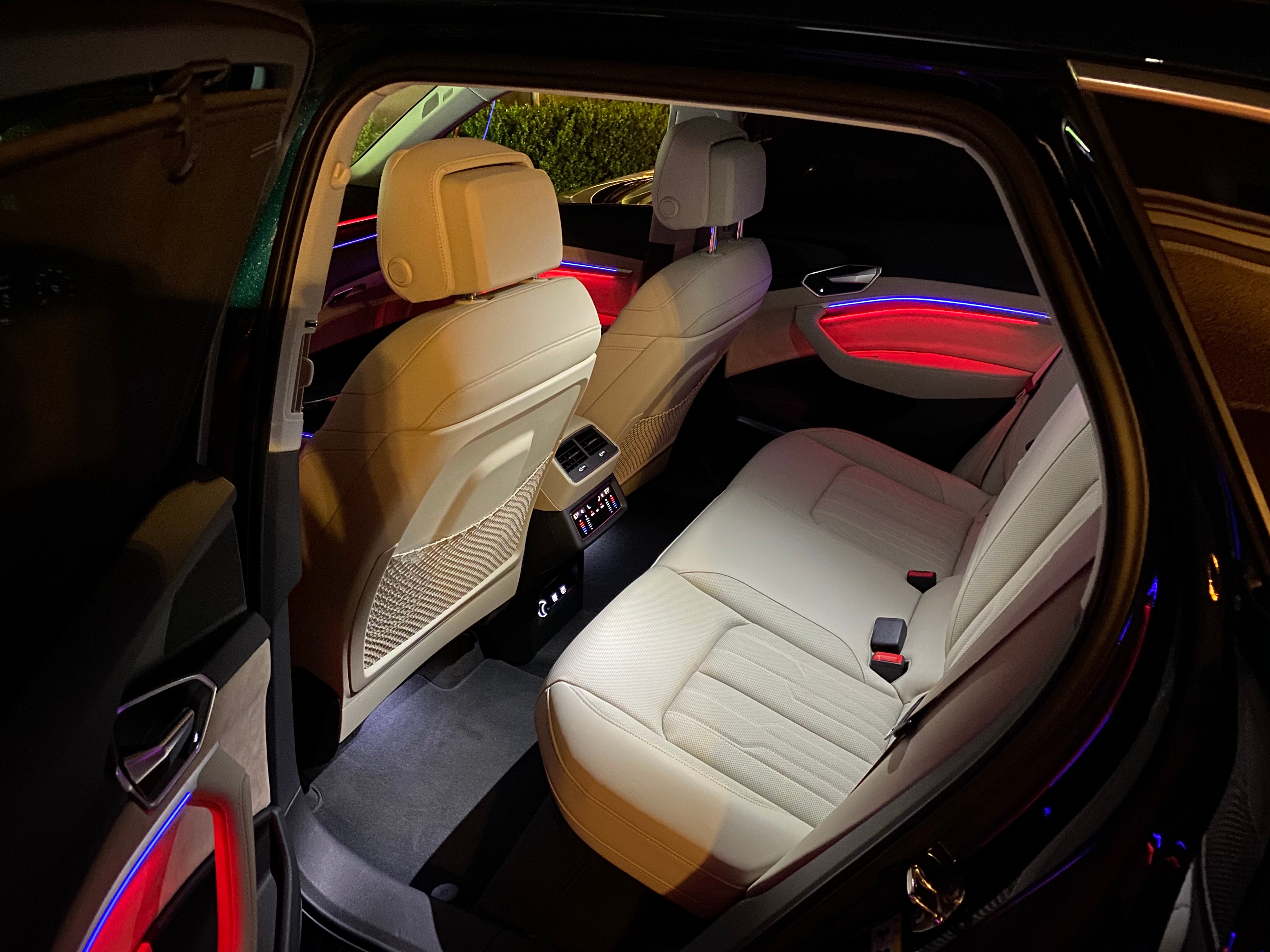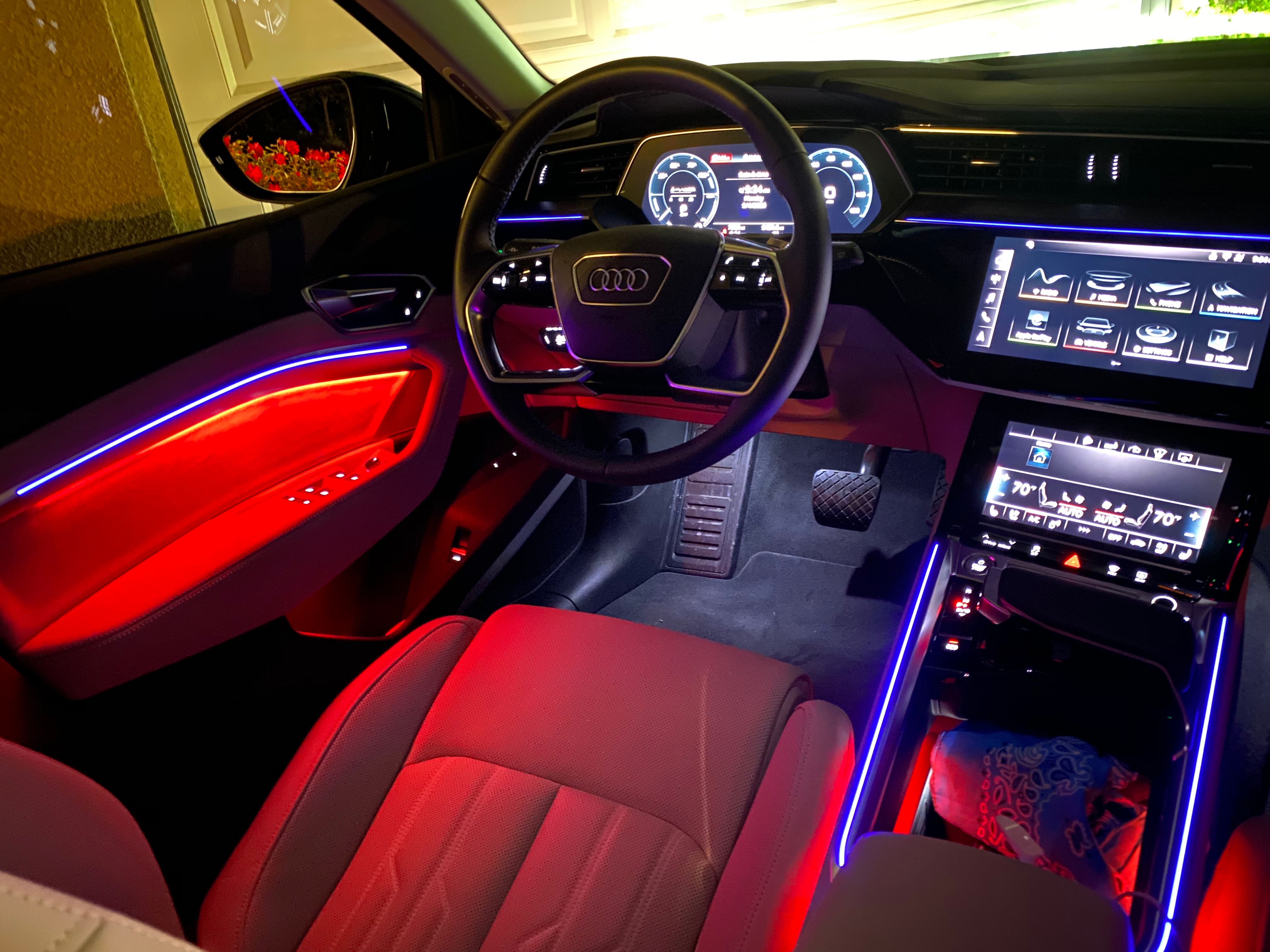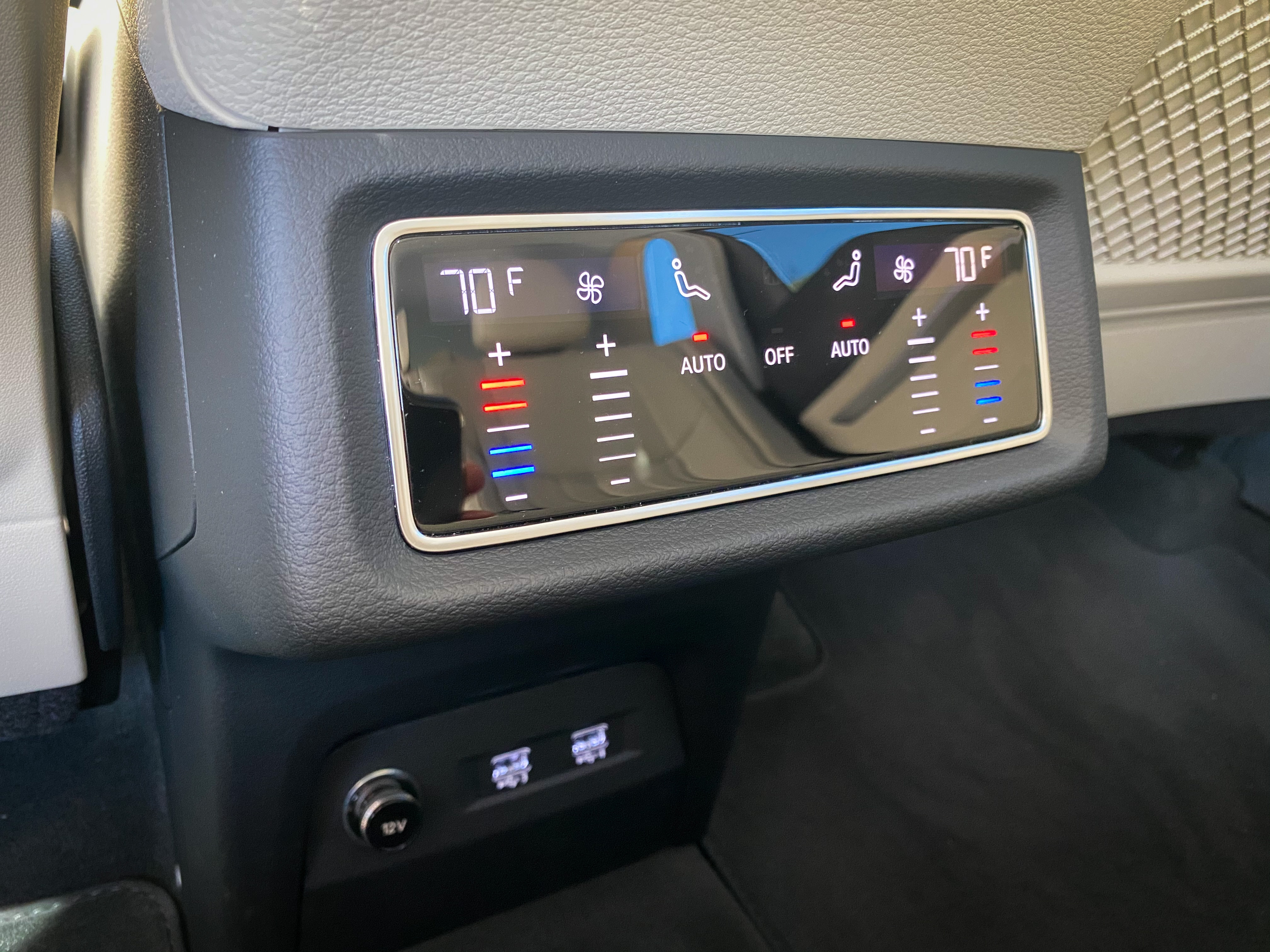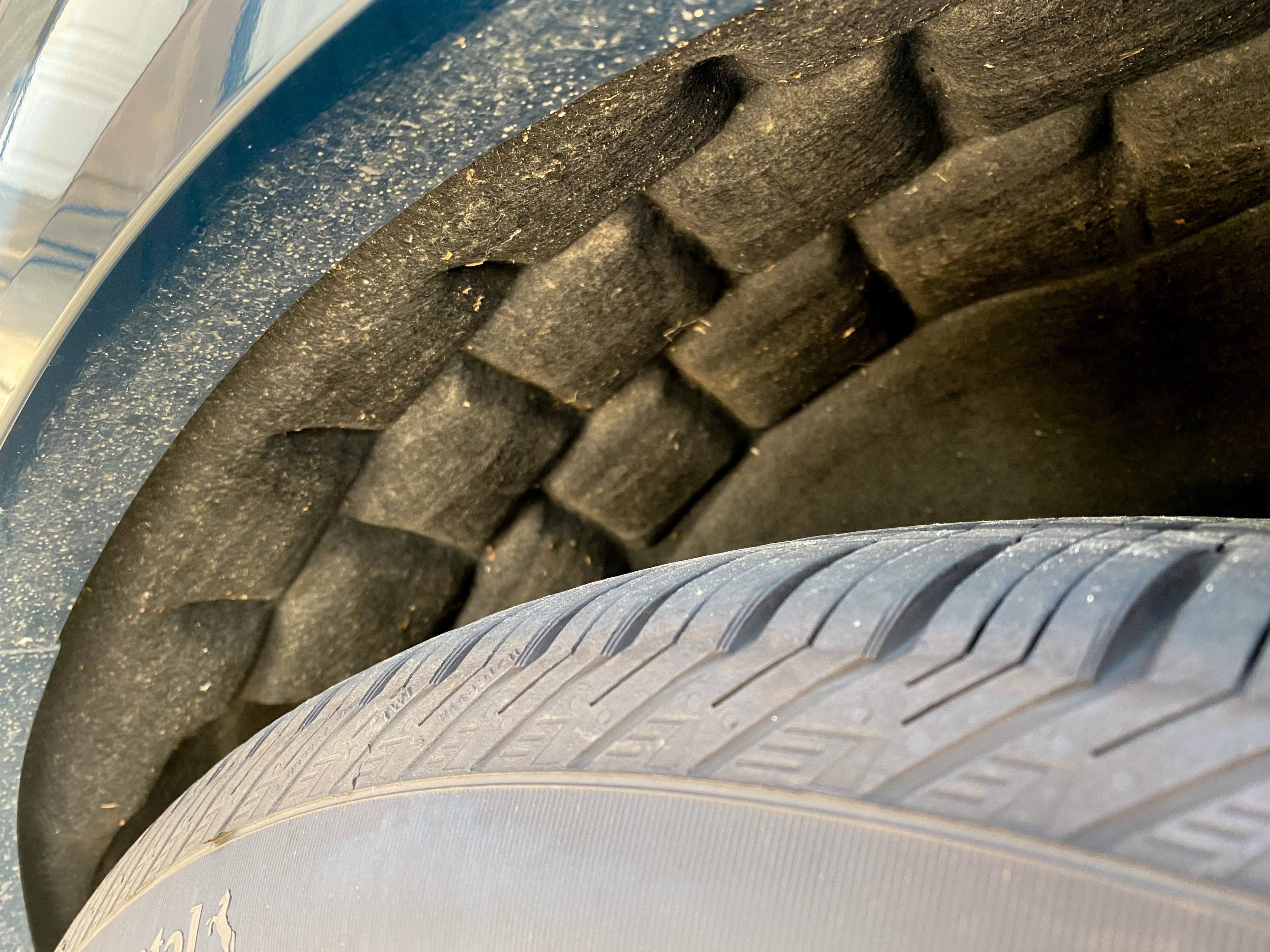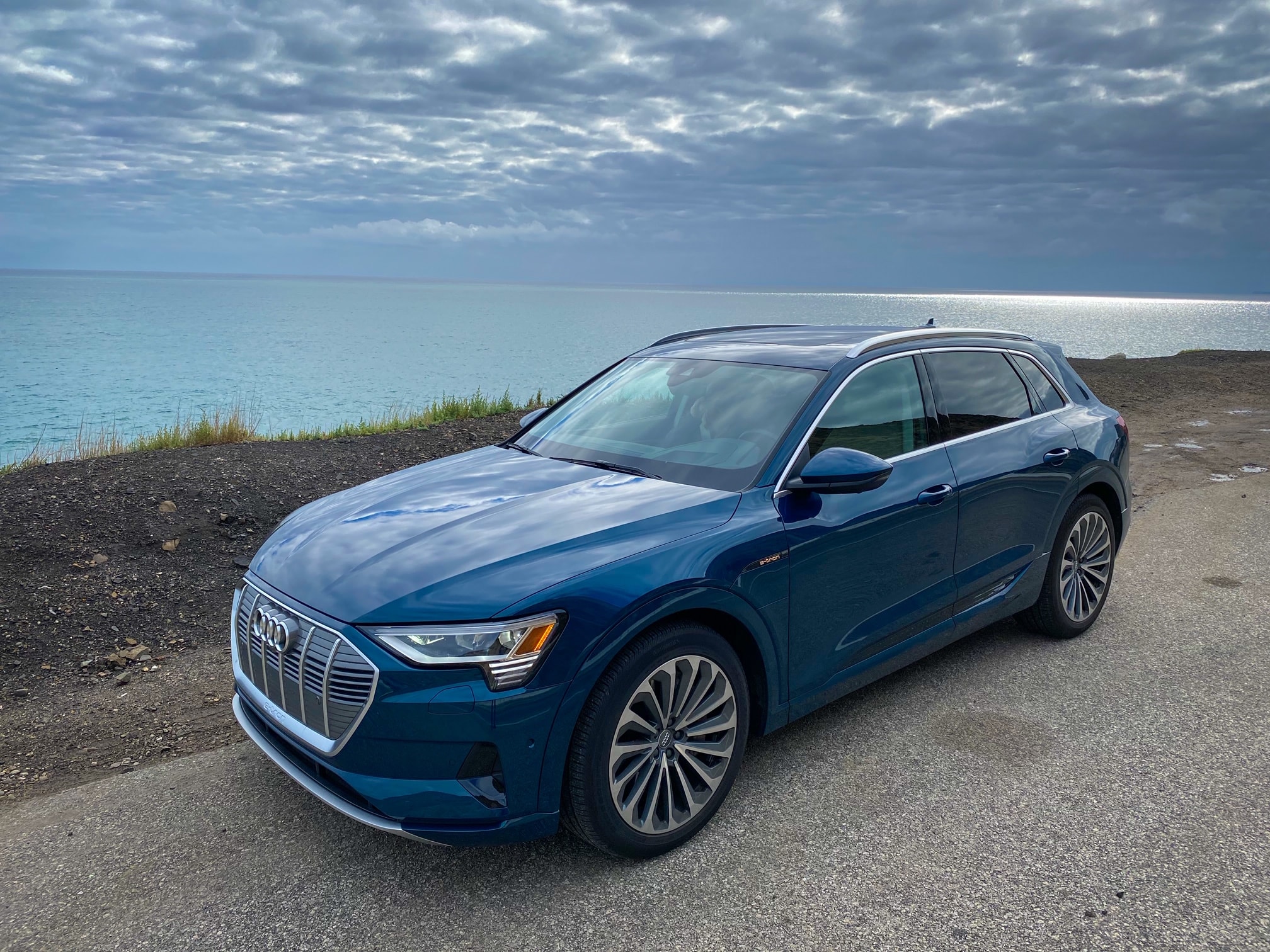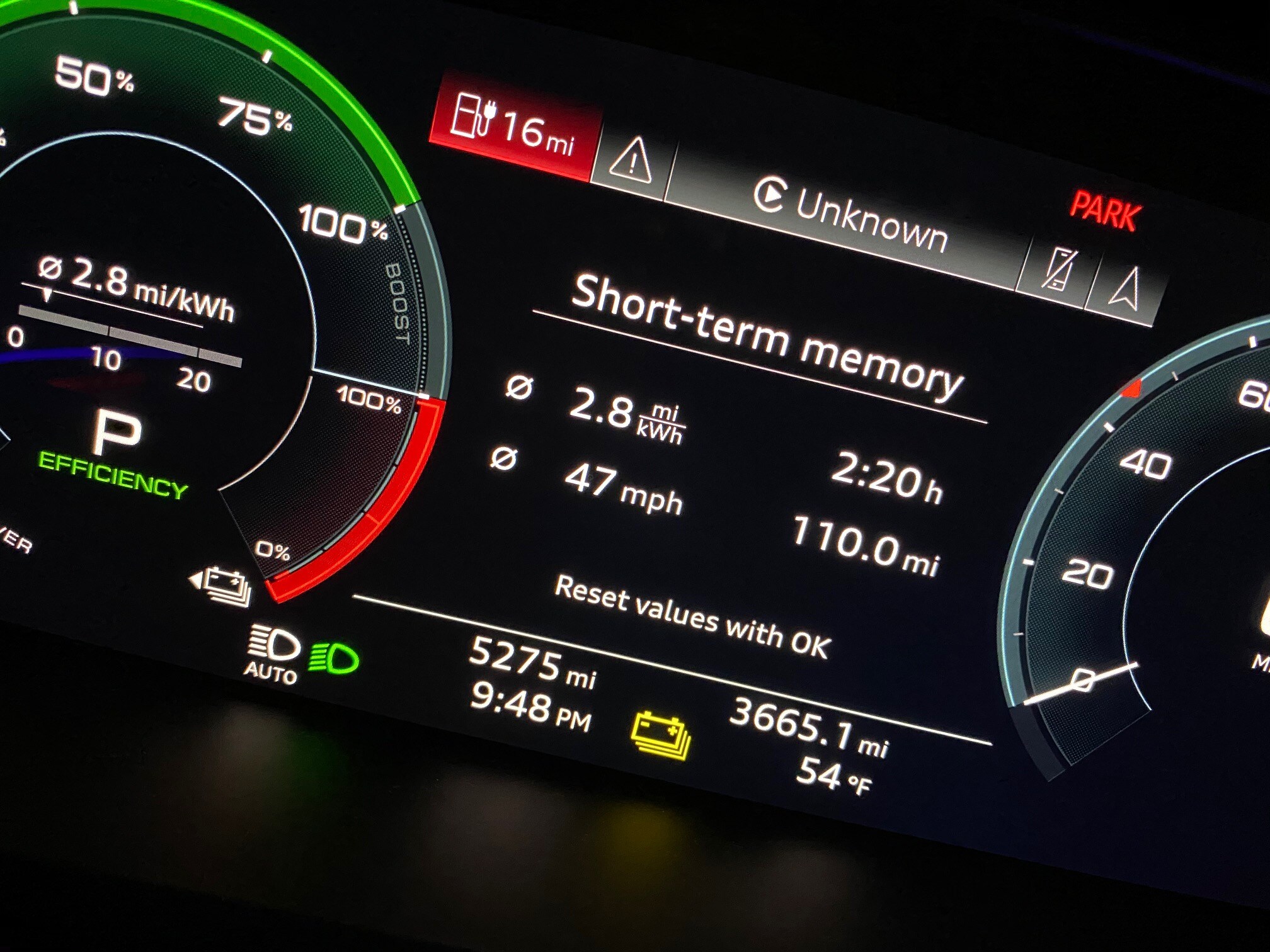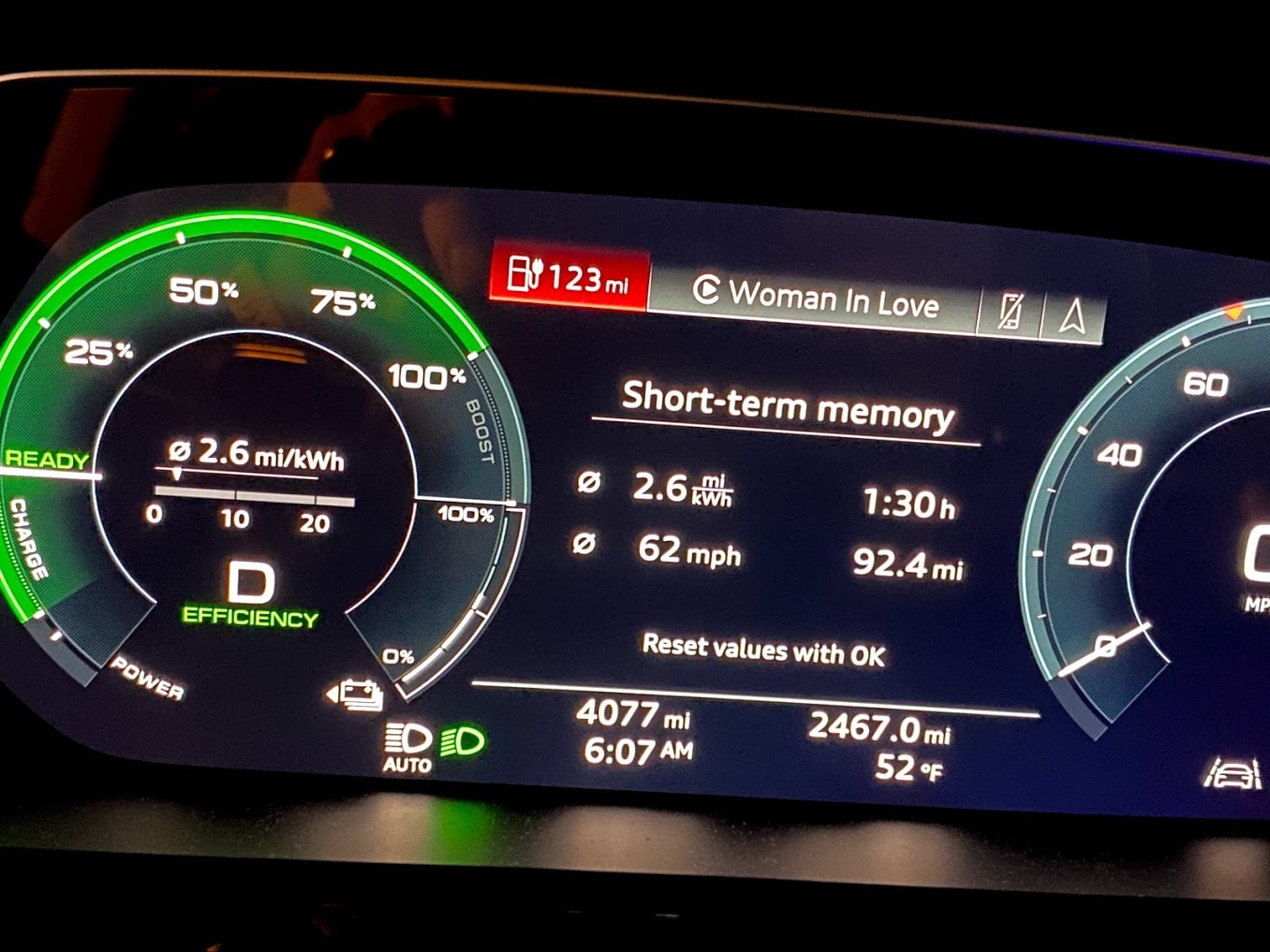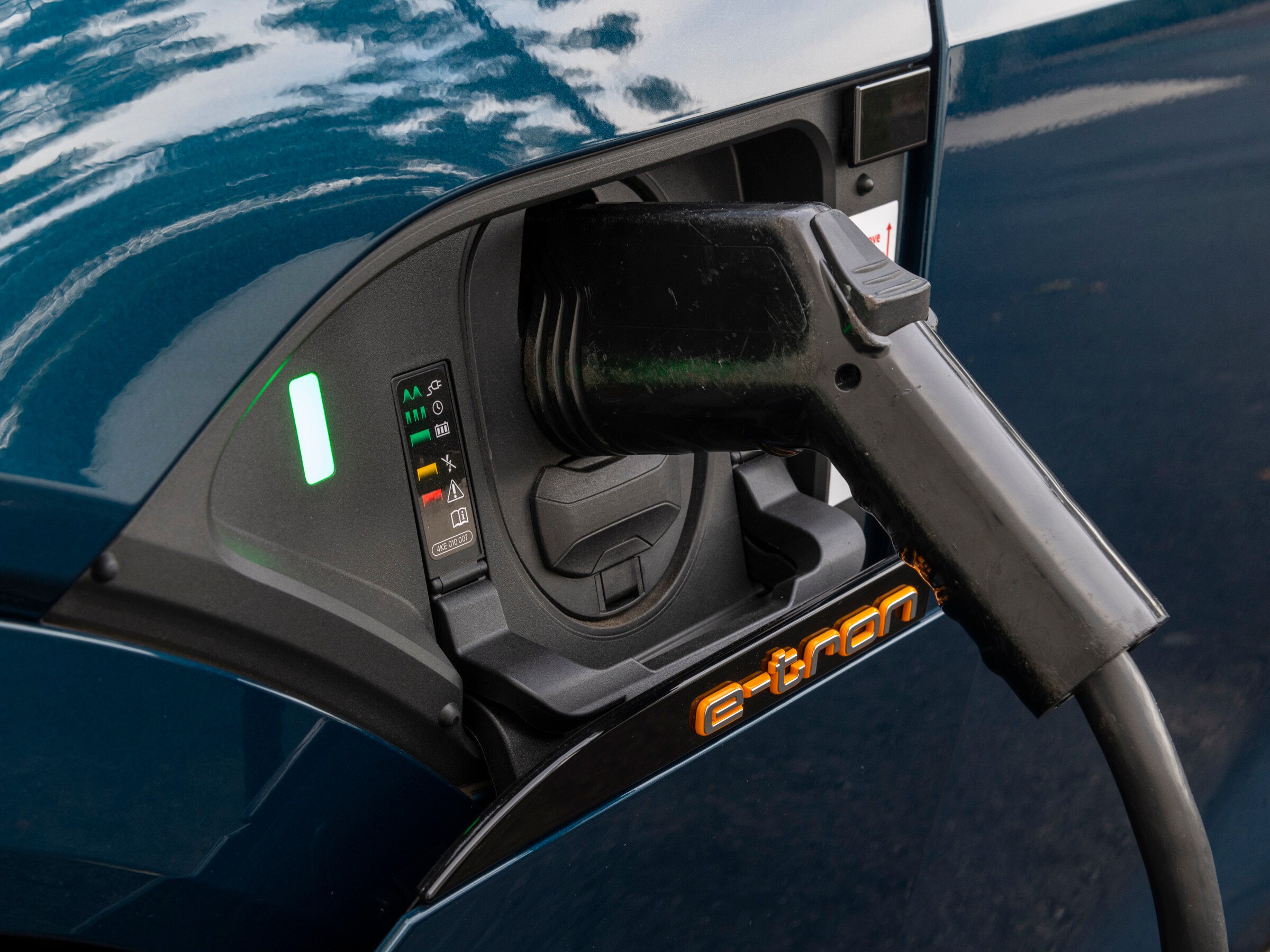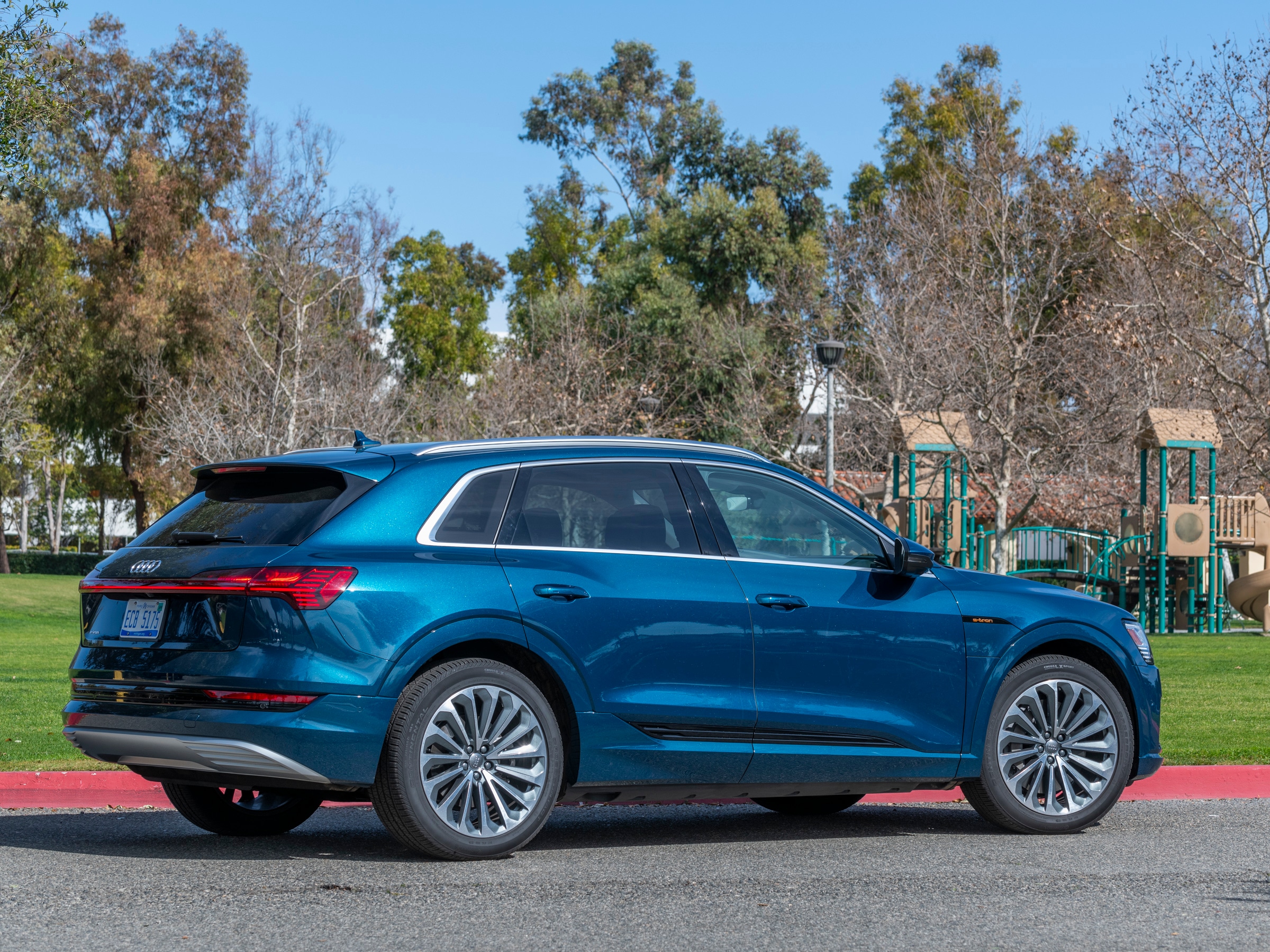We’re spending several months with this Audi e-tron, reviewing the full ownership experience with ongoing updates.
Five exemplary months with the Audi e-tron
by Michael Harley on June 19, 2020
Current Odometer: 7,974 miles
Latest efficiency: 2.4 mi/kWh
Overall efficiency: 2.2 mi/kWh
Maintenance/Service Costs: $0.00
Time out of Service: 0 days
All good things must come to an end, says the ancient proverb. And such was the case with my five-month loan of the 2019 Audi e-tron – after a final wash, vacuum, and detail, I had to give it back.
There are countless misconceptions about owning a pure-electric vehicle – range anxiety and outrageous electrical bills are at the top of everyone’s fears. But, after integrating the Audi e-tron into our household for nearly half-a-year, neither of those concerns ever materialized.
The EPA says the 2019 Audi e-tron delivers approximately 204 miles of range from its 95-kWh battery (my experience says it delivers more if pushed — read some of the earlier posts). Based on the overall efficiency of 2.2 mi/kWh, it appears that the crossover delivered just that without faltering.
My objective, from the outset of the loan, was to only use my home (ChargePoint Home Flex) or office Level 2 charger to restore the crossover’s battery either during the day or overnight — I did not want to visit a publich charger because I wanted to see if it was possible to own a pure-EV without having to rely on the public charging grid.
In the end, I put 6,364 miles on the e-tron and I never visited a public charger. Convenience won. Mission accomplished!
As expected, charging exclusively at home did increase my electric bill by about $82/month (the ChargePoint app tracks this down to the dollar). Yet I consider that more than acceptable as it saved me five trips to the gas station (a cumulative hour or more of my time) and about $225 in equivalent gasoline costs averaged monthly. Electric vehicles are often touted as being much less expensive and much more convenient to operate – this was repeatedly confirmed with the Audi e-tron.
It is important to comment about the e-tron’s electric powertrain, which puts a powerful motor at each axle. I’m a combustion guy who really enjoys an engine singing at redline, but the instant torque of Audi’s electric motors made me an electron convert. Effortless acceleration away from stoplights and zero lag while passing on hills (even with five adults on board) are game-changing driving dynamics. And, the fact that an EV requires no initial warm-up (electric motors don’t need to get up to temperature), translated to brisk driving right out of the driveway – EVs are an enthusiasts delight.
Another important mention is reliability. I put more than 6,000 miles on the e-tron and it worked flawlessly. No issues with the drivetrain, electronics, or mechanical parts of the crossover. The e-tron’s maintenance schedule is also very light (other than inspections, the first significant milestone is replacing the cabin dust and pollen filter at 20,000 miles). Aside from washing and vacuuming, most owners won’t need to visit a dealership but every two years.
Living with the Audi e-tron for five months was extremely pleasant — the pure-EV seamlessly integrated itself into our busy family lifestyles without a single compromise. The e-tron won everyone over with its luxury, technology, and effortless recharging. As a result, it has earned the accolade of the best family-oriented press vehicle that I have ever tested.
Is there a 2020 Audi e-tron?
by Michael Harley on June 1, 2020
Current Odometer: 7,912 miles
Latest efficiency: 2.3 mi/kWh
Overall efficiency: 2.2 mi/kWh
Maintenance/Service Costs: $0.00
Time out of Service: 0 days
Audi likely will not sell a 2020 model year e-tron. Instead, the company will skip the model year 2020 and transition directly to model year 2021, which is expected to arrive in the Fall of 2020. Blame goes to the Coronavirus pandemic that affected the global production of the all-electric vehicle and introduced unexpected delays. On a related note, the automaker is offering a 2020 Audi e-tron Sportback. The two electric crossovers are virtually identical in size, but the Sportback features a sleeker exterior profile.
Is the Audi e-tron worth it?
by Michael Harley on May 27, 2020
Current Odometer: 7,883 miles
Latest efficiency: 2.1 mi/kWh
Overall efficiency: 2.2 mi/kWh
Maintenance/Service Costs: $0.00
Time out of Service: 0 days
Taking technology, engineering, safety, and luxury into consideration, the value proposition of owning an Audi e-tron is very strong — yes, it is worth the money. Some consumers try to compare Audi’s all-electric crossover to a traditional combustion vehicle, but that is apples-to-oranges as the only commonality between the two is the basic architecture of today’s crossover (a five-passenger chassis rolling on four pneumatic tires). Take a close look at the Audi and you will note that propulsion motors, energy regenerative systems, power storage systems, dashboard displays, and even ergonomics are unique to the Audi.
Nearly everything about the Audi e-tron is more advanced, from laminated windows and quilted wheel well insulation to adaptive LED headlights and innovative active safety systems. Operating expenses, service costs, and maintenance intervals of the Audi e-tron are also much lower and less frequent. Taking everything into account, and comparing it to the others in the segment, the $74,800 base price of the Audi e-tron looks rather attractive.
How many miles does the Audi e-tron get?
by Michael Harley on May 19, 2020
Current Odometer: 7,592 miles
Latest efficiency: 2.7 mi/kWh
Overall efficiency: 2.2 mi/kWh
Maintenance/Service Costs: $0.00
Time out of Service: 0 days
The EPA rates the 2019 Audi e-tron for 204 miles of pure-electric range, but the real-world range of the electric crossover varies considerably. Drive with a heavy foot, continuously accelerating hard and braking abruptly, and the 95 kWh battery will be depleted in as few as 150 miles. Drive sensibly, accelerating with traffic and utilizing efficient regenerative braking, and range may be extended to 220 miles or more.
Earlier today, I attended a company get-together (utilizing best social distancing practices) at a public park in Irvine, which is located about 96 miles from home — 192 miles round-trip. While that distance would leave the e-tron precariously close to a depleted battery if I didn’t visit one of the hundreds of available public chargers, I chose to take the Audi and see how it would play out.
Before the trip, I inflated the tires to 49 psi “square” (all four at the identical pressure). That’s a bit higher than the recommended number on the door jam sticker, but I wanted to eliminate as much rolling resistance as possible. I also chose to drive in ECO mode (thus allowing full function of the climate control) and not exceed the posted speed limit by more than 5 mph.
Long story short, I left my home with an indicated range of 168 miles, which is far short of the neccesary 192 miles! (The vehicle’s computer displays a range estimate based on previous consumption rates.) Nevertheless, I hit the highways and arrived in Irvine 90 minutes later. The dashboard showed a battery state-of-charge at 63% and a range balance of 134 miles — plenty of range to get the 96 miles back home. The return trip home dropped the battery state-of-charge down to 18% with a range balance of 40 miles. That means I could have stretched 232 miles out of the battery!
Why did the trip to Irvine consume 37 percent of the battery, while the trip home consumed 45 percent of the battery? Blame different elevations. My home is at an elevation of 896 feet above sea level. The park is at about 56 feet above sea level. The drive to the park was downhill (descending about 840 feet), which is more efficient. And that actually makes a difference in range whether driving electric or combustion vehicles.
Audi e-tron interior lighting
by Michael Harley on May 7, 2020
Current Odometer: 7,101 miles
Latest efficiency: 1.8 mi/kWh
Overall efficiency: 2.2 mi/kWh
Maintenance/Service Costs: $0.00
Time out of Service: 0 days
Audi has done a brilliant job designing the interior off the e-tron. It is ergonomically correct (once you become familiarized), styled very well, and visually stunning — especially at night with the upgraded ambient lighting. Occupants are able to change the illuminated colors (dozens are offered) and intensity via the infotainment system. The customized lighting includes the illumination on the doors, footwells, and the tiny LED strips that accent the cabin. Keeping things even more visually appealing is the ability to use contrasting colors for your favorite themes or seasons (e.g., I am using red and violet because of the shock value). That said, nearly everyone who has ridden inside the e-tron has commented about the lighting as it is both convenient (you can find your things around the cabin) and visually appealing. And, on a related safety note, the door panels will immediately change their color to bright red and flash if there is an obstruction or danger outside the vehicle as part of its “Exit Warning” system.
Audi e-tron rear seat passenger comfort and luxury
by Michael Harley on April 24, 2020
Current Odometer: 6,741 miles
Latest efficiency: 2.3 mi/kWh
Overall efficiency: 2.2 mi/kWh
Maintenance/Service Costs: $0.00
Time out of Service: 0 days
Rear seat passengers in the 2019 Audi e-tron will find accommodations extremely comfortable. There is plenty of head and shoulder room, and the front seats have plenty of space beneath for toes to wiggle (many vehicles have so many electronics under the seat that there is literally no room for shoes to slide). Outward vision is excellent, thanks to the large windows and tall ride height, and even those over six-foot tall find the passenger area spacious.
Those in the second row will enjoy a pair of USB outlets, which are good for charging mobile devices. And, there’s an old-school 12v outlet for older devices that require that type of round plug (or, shove in another USB-splitter for even more power capability).
The rear passengers on our Prestige trim are also offered dual-zone climate control with vents on the pillars and console — keeping temperature is effortless. However, one frustration (from seemingly everyone who rides in the rear seats) is the lack of heated second row cushions. “Why do we get our own climate control, but we can’t heat our seats?” is a commonly heard complaint. Audi does offer heated rear outboard seats in the optional $900 “Cold Weather Package” that is bundled with adaptive windshield wipers, heated washer jets, and an additional high-voltage heater. I suggest you order it.
Audi e-tron utility: the crossover will carry the kitchen sink
by Michael Harley on April 16, 2020
Current Odometer: 6,662 miles
Latest efficiency: 1.9 mi/kWh
Overall efficiency: 2.2 mi/kWh
Maintenance/Service Costs: $0.00
Time out of Service: 0 days
With coronavirus shutting down the world, I was stuck moving a brand-new farmhouse sink from the front porch of my home to a contractor’s warehouse. The 85-pound fireclay sink arrived from Italy double-boxed, meaning the exterior packaging was bulky and massive. Thankfully, the 2019 Audi e-tron swallowed it with ease.
The crossover allows hands-free opening of the tailgate and there are remote releases for the second row seats on each wall of the cargo area. I put an old box on the aluminum sill to protect the metal and make it easier to slide the box once it was lifted into place. For safety and stability, I secured the load. Kudos to Audi for using anchored metal tie-downs as they can accommodate tensioned nylon straps without bending or pulling off the floor (any automakers using flimsy plastic tie-downs anchored in carpet should be ashamed of themselves — and we all know who you are). Audi has four anchor points on the rear floor of the e-tron, which are located at each corner. The clips fold flush with the floor so they are out of the way until needed.
Audi e-tron illumination and all-weather lights
by Michael Harley on April 13, 2020
Current Odometer: 6,601 miles
Latest efficiency: 2.0 mi/kWh
Overall efficiency: 2.2 mi/kWh
Maintenance/Service Costs: $0.00
Time out of Service: 0 days
Audi’s obsession with design didn’t stop with the sheet metal. The e-tron’s lighting designers, Cesar Muntada and Philipp Wunsch, were obsessed with exterior illumination that “translated the sound of silence to the visuals of lighting.” These unique touches include the precision of the animated light bar on the rear, with more than 100 LEDs, and the precise sequence that each light illuminates as the vehicle is unlocked and locked.
Taking lighting one step further, the 2019 Audi e-tron is fitted with “all-weather lights” that are activated via switch to the right of the primary switch (did I happen to mention that the illuminated switch doubles its intensity as your hand sweeps over it, which makes it easier to find?). When switched on, the all-weather lights send more of the headlight LED illumination to the sides of the vehicle to improve the driver’s vision and field of view during inclement weather. They are surprisingly effective.
(Note: One of our few pet-peeves with the e-tron are the glossy black surfaces that show tons of dust and fingerprints — visible in our picture. Audi isn’t the only automaker to be doing this these days, as it has become a trend.)
E-tron has quilting in the wheel wells to reduce cabin noise!
by Michael Harley on April 2, 2020
Current Odometer: 6,327 miles
Latest efficiency: 1.9 mi/kWh
Overall efficiency: 2.2 mi/kWh
Maintenance/Service Costs: $0.00
Time out of Service: 0 days
Everyone knows that, “Quilted Northern toilet paper has the strength and softness you can count on, making it easy to get a comfortable clean.” But did you know that similar quilting significantly reduces noise within the passenger cabin of the 2019 Audi e-tron?
Early automobiles had painted steel lining their wheel wells. It kept the water and dirt out of the cabin, but it was loud and prone to rust (usually after being sand-blasted by rocks and pebbles). Automakers switched to a spray-on, tar-like, material that reduced noise and slowed corrosion, but it was heavy. Finally, car makers discovered synthetic felt-like linings that were lightweight and impervious to the elements.
Audi has taken the technology one step further by employing a thickly “quilted” sound-absorbing fabric in each wheel well of the e-tron. This not only eliminates the sound of rocks and gravel bouncing around, but it very effectively reduces the noise generated by the whirling tires and their impact with the pavement. The results speak for themselves — I haven’t carried a single passenger in the e-tron who hasn’t remarked about how quiet its passenger cabin is.
What are the Actual 2019 Audi e-tron Operating Costs?
by Michael Harley on March 24, 2020
Current Odometer: 6,058 miles
Latest efficiency: 2.1 mi/kWh
Overall efficiency: 2.2 mi/kWh
Maintenance/Service Costs: $0.00
Time out of Service: 0 days
I installed a ChargePoint Home Flex charger at my residence that allows me to very accurately track charging expenses on a mobile app — it literally connects online with your utility company to use actual rates. (A screen shot from earlier this month is below.)
Note that I added 128 miles of range for $6.87 one night and 158 miles of range for $8.13 the next night (charging after 9:00 PM for reduced rates). Both figures calculate out to a $.05/mile running cost, which is significantly lower than the estimated $.19/mile running cost of a 2020 Audi Q7 (EPA 21 MPG with California fuel at $3.99/gallon). Or, if you want to look at it another way, the e-tron delivers an “operating cost” equivalent to about 80 MPG!
In other words, a family that drives 12,000 miles/year will spend only $600.00/year (about $50.00/month) on electrical charging. This is in sharp contrast to the Audi Q7 owner who will spend a whopping $2,280.00/year (or $190.00/month) on premium gasoline. Add in the time gained by not having to visit the gas station weekly and the cost/time savings of driving a pure-EV like the e-tron are significant. And then there’s the instant robust torque of the electric motors, the minimal maintenance, the emission-free driving…
Can You Drive the 2019 Audi e-tron in the Rain?
by Michael Harley on March 22, 2020
Current Odometer: 5,984 miles
Latest efficiency: 2.0 mi/kWh
Overall efficiency: 2.2 mi/kWh
Maintenance/Service Costs: $0.00
Time out of Service: 0 days
Of course you can! Many consumers don’t realize that you can drive a pure-electric vehicle, like our 2019 Audi e-tron, in heavy downpours without worry (despite the popular convention that electricity and water don’t mix). No need to worry in Audi’s five-passenger crossover — or any other EV for that matter — as the company’s engineers worked tirelessly to ensure that all energized components are safely sealed from water, dust, and dirt intrusion. Rain, car washes, dirt roads, and sand dunes won’t affect the electrical system. And, while we are on that subject, the engineers have also developed a protective system for the high-voltage chargers. In a nutshell, the charger cord isn’t electrified until the wall unit and vehicle have both signaled an approval “handshake” acknowledging that all safety systems are working properly (the “click” of approval typically takes a few seconds). This means you can plug the e-tron in while you are soaking wet and standing in a puddle of water — or you can wait until the rain stops coming down.
Range is Temperature and Driving Style Dependent
by Michael Harley on March 16, 2020
Current Odometer: 5,865 miles
Latest efficiency: 1.8 mi/kWh
Overall efficiency: 2.2 mi/kWh
Maintenance/Service Costs: $0.00
Time out of Service: 0 days
While the overall efficiency of the e-tron continues to hover at 2.2 mi/kWh, I’ve noticed a significant swing on the trip efficiency based on ambient temperature and driving style. The EPA rates the 2019 Audi e-tron at 204 miles of range, but on a cold morning (following multiple short errands) the range usually indicates about 165 miles following a full charge. On the other hand, I’ve seen the range indicate 211 miles on a warm day following an efficient drive. Keep in mind that the Audi e-tron continuously updates its range so it will add/subtract miles based on numerous inputs and calculations. This is helpful, as it allows the operator to “stretch” miles in much the same manner as a combustion vehicle — mellow driving increases range. Below: We’ve taken the 2019 Audi e-tron to the beach several times. The pure-EV does well on the drive over the Santa Monica mountains as the abundant torque makes passing in the mountains effortless.
213 Miles on One Charge (with 16 Miles Remaining)
by Michael Harley on March 5, 2020
Current Odometer: 5,275 miles
Latest efficiency: 2.9 mi/kWh
Overall efficiency: 2.2 mi/kWh
Maintenance/Service Costs: $0.00
Time out of Service: 0 days
Following-up on the morning drive that allowed me to drive the 2019 Audi e-tron 103 miles on just 54 miles of consumed range (see post below), I decided to not charge the e-tron during the day and see if I could make it home without stopping (keep in mind that my commute is about 192 miles round-trip). With that mindset, I set the e-tron in “Efficiency” mode and proceeded north with the Adaptive Cruise Control (ACC) set at just over the speed limit of 65 mph. Nearly immediately, the energy efficiency jumped from 2.0 mi/kWh to 2.5 mi/kWh — and estimated range climbed accordingly. Ambient temperatures were in the mid-50s, so I shut off the HVAC completely… and running efficiency climbed to nearly 3.0 m/kWh! Doing math in my head, I realized that I was going to pull into the driveway with 30+ miles of range remaining so I took the long way home. Finally, at 9:48 PM, I rolled into my driveway after covering 213 miles without a charge. My overall efficiency averaged 2.9 mi/kWh during the drive (it dropped .1 as I sat parked), and there was still 16 miles of range left on the battery — that’s about as close as I’d comfortably like to cut it.
103 Miles on Only 54 Miles of Range!
by Michael Harley on March 4, 2020
Current Odometer: 5,165 miles
Latest efficiency: 2.8 mi/kWh
Overall efficiency: 2.2 mi/kWh
Maintenance/Service Costs: $0.00
Time out of Service: 0 days
The efficiency of the 2019 Audi e-tron is most evident when speeds drop. This morning, I departed home with a full charge showing 181 miles of range. I sat in the car over the next two-plus hours negotiating traffic in the LA Basin, which limited my average speed to 47 mph. With the Audi in “Efficiency” mode, the burn rate was just 2.8 mi/kWh, which translated to consuming just 54 miles of range (the on-board computer continuously recalculates range based on real-time consumption). After driving 102 miles, I still had a range of 124 miles showing on the screen! I didn’t charge at the office… going to try to cover the 96 miles back home again…
The 2019 Audi e-tron Delivers 311 Miles in One Day, with Only Level 2 Charging
by Michael Harley on February 28, 2020
Current Odometer: 4,748 miles
Latest efficiency: 2.2 mi/kWh
Overall efficiency: 2.2 mi/kWh
Maintenance/Service Costs: $0.00
Time out of Service: 0 days
I departed my home at 4:38 AM with a fully charged battery (showing 186 miles of range) and drove the 2019 Audi e-tron 97 miles to the office. Once there, I plugged into the Level 2 charger on the side of the building. Six hours later, I unplugged drove 97 miles back home again. After I arrived around 2:00 PM, I plugged the e-tron back into my home Level 2 charger for the next six hours. Then, at 8:00 PM, I drove round-trip to Los Angeles airport (other 100-plus miles). I finally arrived back home at 11:14 PM with 42 miles of range remaining. All told, I drove 311 miles in one day completely worry-free. The all-electric experience was convenient as I effortlessly used the Level 2 chargers at my home and office — no need to visit any public charging stations and zero range-anxiety. This is a perfect example of how an electric vehicle is supposed to be used.
Coasting vs. One-Pedal Driving
by Michael Harley on February 25, 2020
Current Odometer: 4,420 miles
Latest efficiency: 2.3 mi/kWh
Overall efficiency: 2.2 mi/kWh
Maintenance/Service Costs: $0.00
Time out of Service: 0 days
Many automakers, including Tesla, have engineered their electric vehicles for “one-pedal” operation. This means that the vehicle immediately switches to brake recuperation mode each time the accelerator pedal is lifted. The effect from the driver’s seat is significantly increased drag as the electric motors reverse their roles and act as generators while converting kinetic energy into electrical energy.
Audi (and Porsche, for that matter) believes there is a more efficient approach — coasting without drag. Based on the logic that no recuperation system delivers 100 percent recovery (at best, under ideal conditions, that number is about 70 percent), Audi chooses to maximize the glide phase to retain as much kinetic energy as possible by cutting power to the motor and all but disengaging the gearbox. As a result, the e-tron coasts almost frictionless across the pavement when the accelerator is lifted. When the brake is applied, energy regeneration takes place (as expected). As an added benefit, Audi offers two levels of decelerative regeneration for those who prefer it. It is accessed via the steering wheel-mounted paddles.
Slower Speeds Yield Very Impressive EV Gains
by Michael Harley on February 21, 2020
Current Odometer: 4,077 miles
Latest efficiency: 2.6 mi/kWh
Overall efficiency: 2.2 mi/kWh
Maintenance/Service Costs: $0.00
Time out of Service: 0 days
Typically, I set the cruise control at about 75 mph for my long commute. This speed consistently delivers a “burn rate” of about 2.3 mi/kWh with the e-tron (I average about 73 mph when LA traffic is factored in). To test efficiency at a slightly lower speed, I set the cruise control to 70 mph for this morning’s 96.5-mile drive. After arriving at the office, the math (I use a hand-held GPS) said that I had driven with an average highway speed of 68.04 mph. The e-tron had consumed electrons at the rate of just 2.6 mi/kWh, which is a notably impressive gain for a five mile-per-hour decrease in velocity. According to the vehicle’s trip computer, I had consumed a mere 57 miles of range over 96.5 miles of driving — that’s jaw-dropping! Next week, I will drop the speed by another five and see what happens.
2019 Audi e-tron Delivers More Miles than Promised
by Michael Harley on February 7, 2020
Current Odometer: 3,042 miles
Latest efficiency: 2.3 mi/kWh
Overall efficiency: 2.2 mi/kWh
Maintenance/Service Costs: $0.00
Time out of Service: 0 days
I’ve noticed that the Audi e-tron, unlike any other EV that I have tested, delivers more real-world miles than estimated by its trip computer. During this morning’s 96.5-mile commute, I averaged 72.92 mph on the highway leg and the e-tron used just 70 miles of range during that period, which is better than a 25 percent improvement. Returning more miles than promised is very unusual, as my experience with other pure-electric vehicles is just the opposite (Tesla and Kia both come to mind). Credit likely goes to Audi’s meticulous thermal management of its battery and efficiency during the coasting cycle of driving.
Silent Luxury, Pure-EV Style
by Michael Harley on February 2, 2020
Current Odometer: 2,447 miles
Latest efficiency: 2.4 mi/kWh
Overall efficiency: 2.2 mi/kWh
Maintenance/Service Costs: $0.00
Time out of Service: 0 days
Electric vehicles, by design, operate much more quietly than their combustion counterparts because they lack noisy engines. Audi takes things a few steps further ahead with its pure-EV by focusing on significantly reducing cabin noise. Laminated glass, acoustic insulation, and meticulous work in the wind tunnel (managing airflow) make the e-tron one of the quietest vehicles that we have ever driven.
The downside is a weight penalty. Heavy batteries and premium sound deadening force the e-tron to tip the scales at about 5,750 pounds. This is about 800 pounds heavier than its Q7 sibling. The Tesla Model X (5,500 pounds) and Jaguar I-PACE (4,700 pounds) are lighter, but neither is as quiet or as comfortable as the Audi e-tron. At cruising speeds, the Audi is near-silent, while the (noisy) Tesla and Jaguar are notably louder.
Introducing the 2019 Audi e-tron quattro
by Michael Harley on January 27, 2020
Current Odometer: 1,921 miles
Latest efficiency: 2.4 mi/kWh
Overall efficiency: 2.2 mi/kWh
Maintenance/Service Costs: $0.00
Time out of Service: 0 days
The Audi e-tron was launched as an all-new model for 2019. Slotting in physical stature above the Audi Q5 and below the Audi Q7, the 100 percent electric five-passenger crossover is fitted with dual asynchronous motors and a 95 kWh battery. The EPA (U.S. Environmental Protection Agency) certified the vehicle with an estimated range of 204 miles. While a 200-plus mile driving range is strong, the figure is notably fewer than the range of the Jaguar I-PACE (253 miles) and Tesla Model X (351 miles), which are the vehicle’s premium pure-EV competitors.
After piloting a 2019 Audi e-tron across the United States in a cross-country Cannonball-style drive late last year, we were impressed with the crossover’s comfort, efficiency, and ability to use convenient 150-kW DC high-speed commercial charging stations. The high-powered units use the SAE Combined Charging System (CCS) to restore an 80 percent charge to the e-tron’s battery in about 30 minutes, which makes it one of the quickest on the market.
Home Level 2 charging
But using high-speed chargers isn’t the “use case” for today’s EV. Electric vehicle owners should have a lower power Level 2 charger at home to charge overnight (during off-peak hours) and wake to a fully restored battery. Those with longer commutes will have a Level 2 unit at work, to charge during the day. While high-speed DC chargers are significantly faster, their use should be reserved for road trips when the vehicle is hundreds of miles from home.
Putting this logic to the test, we’ve borrowed a 2019 Audi e-tron quattro. The Galaxy Blue model, in range-topping Prestige trim, carries an as-tested price of $84,890 (including a $995 destination charge). Equipped with ventilating and massaging Valcona leather seats, acoustic laminated glass, and a Bang & Olufsen audio system, the cabin is comfortable and serene. A full suite of innovative technology, including Audi pre sense safety features and adaptive cruise control, make it effortless to drive.
Our objective is to challenge the e-tron with a daily 190-mile commute, load it up with adults for evenings on the town, drive it over the mountains to the beach, and run family carpools. All without ever having to tap into the public DC charging grid. Many experts say that a 200-mile range EV is more than sufficient for everyone. We are going to find out.
